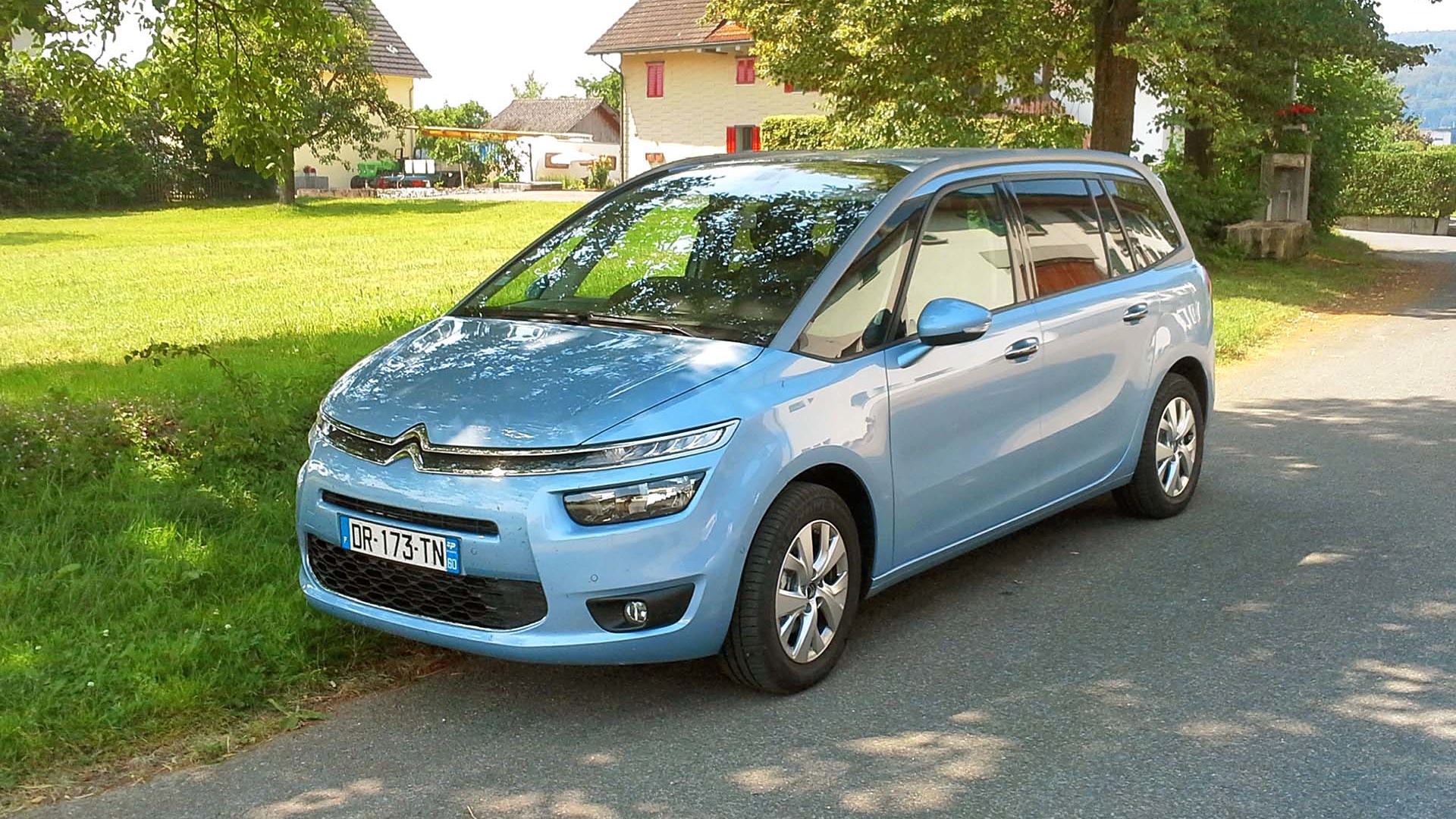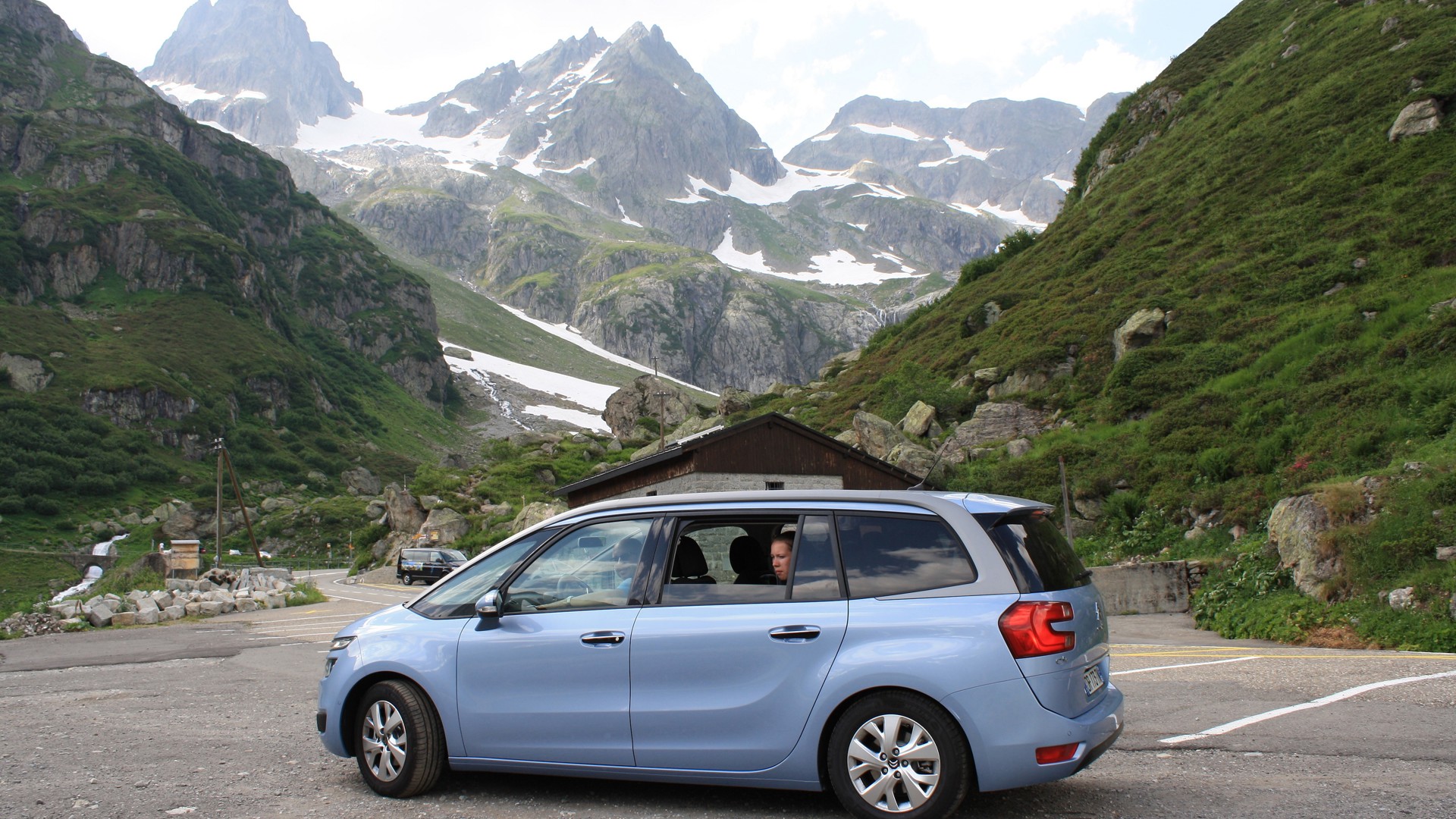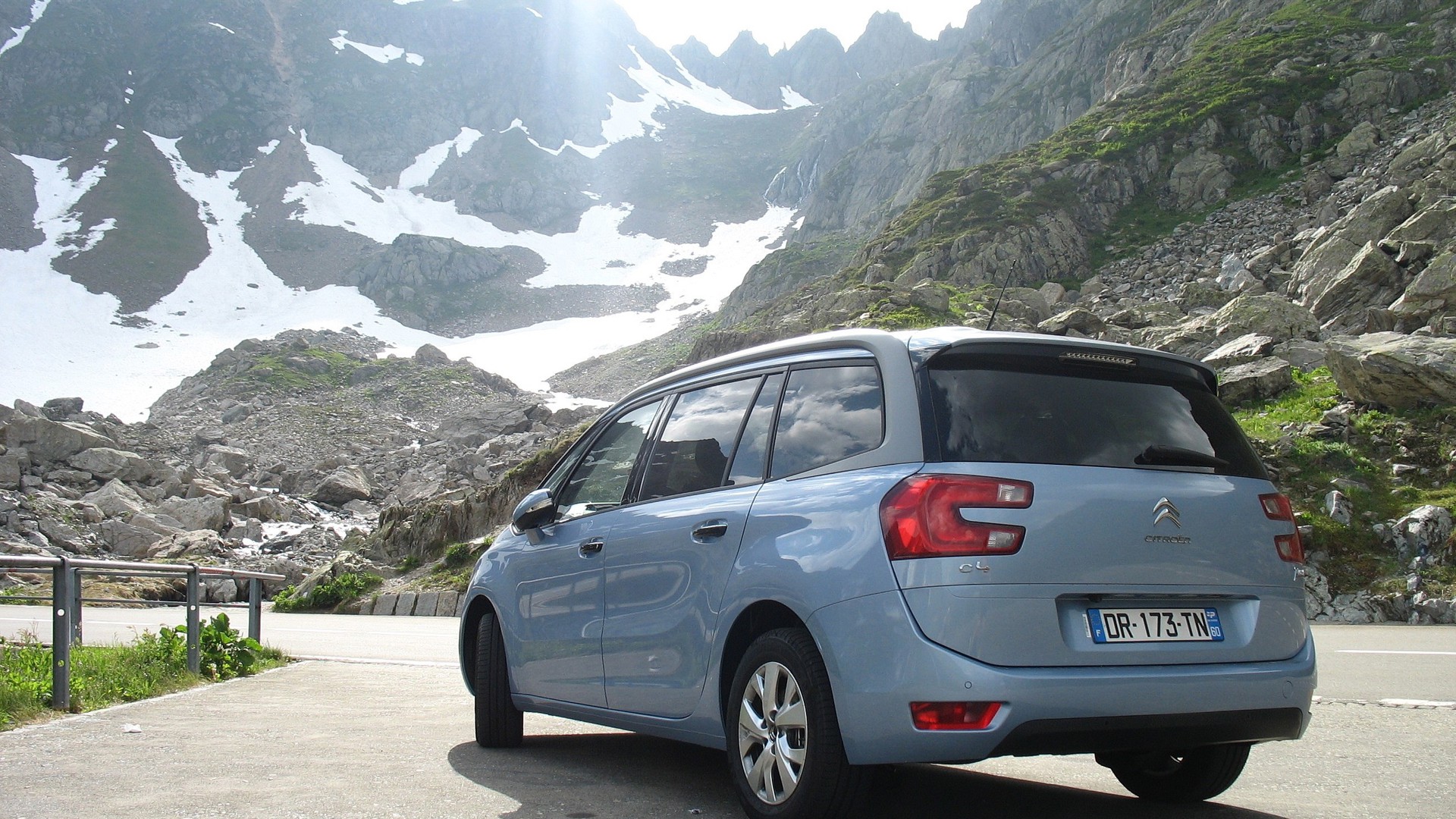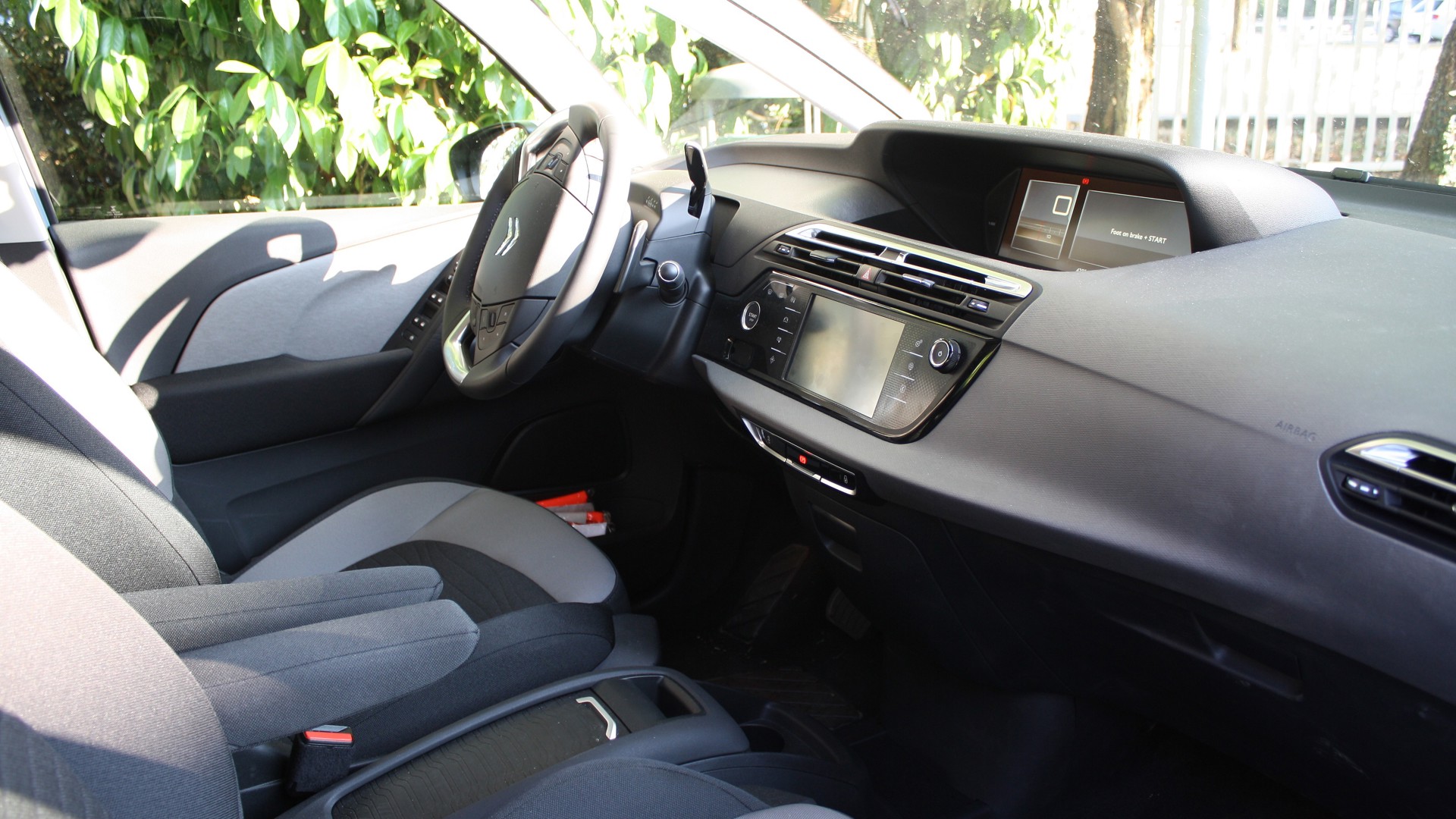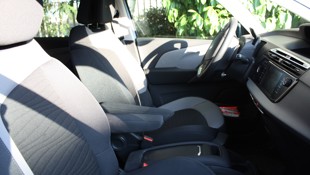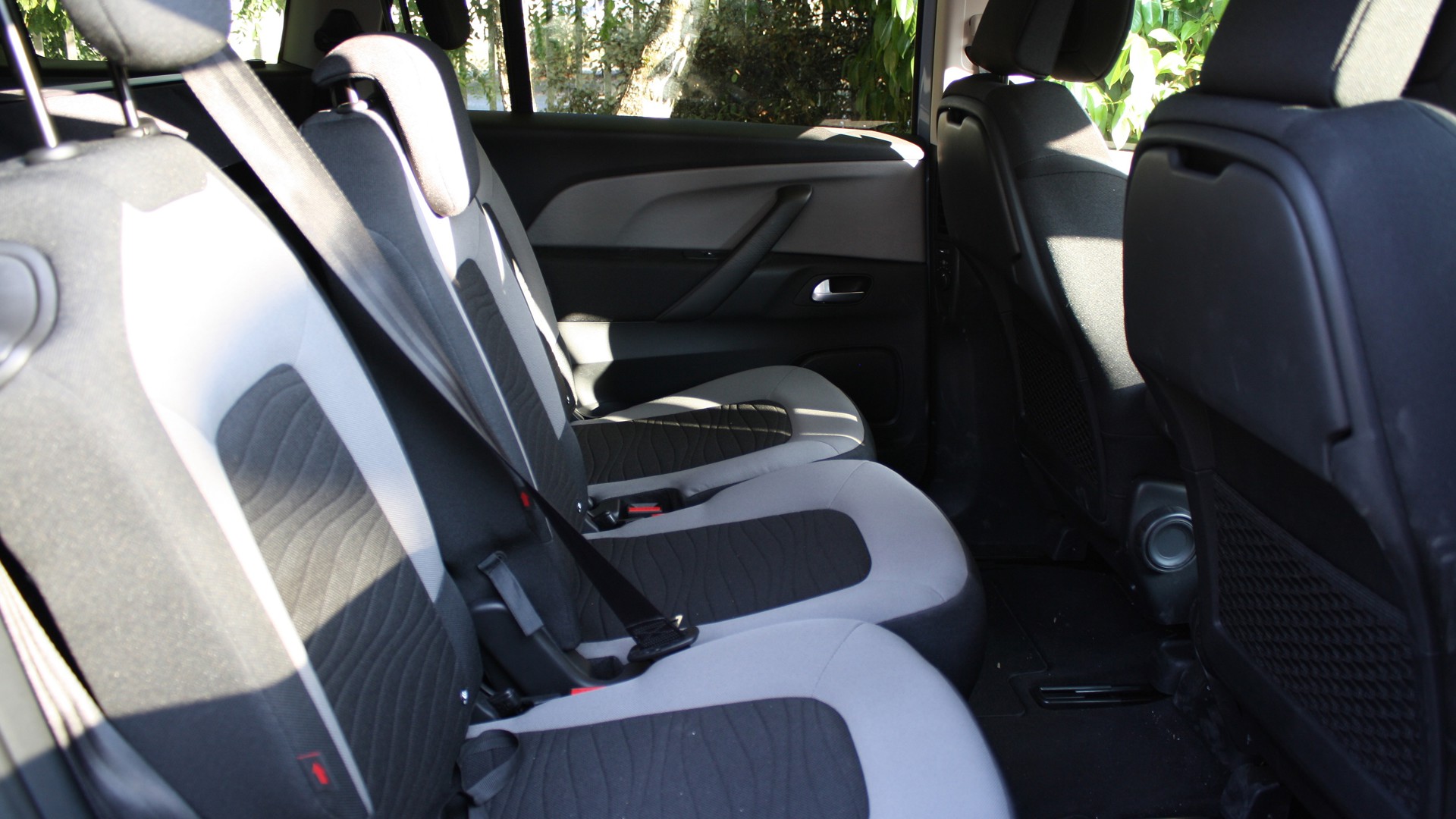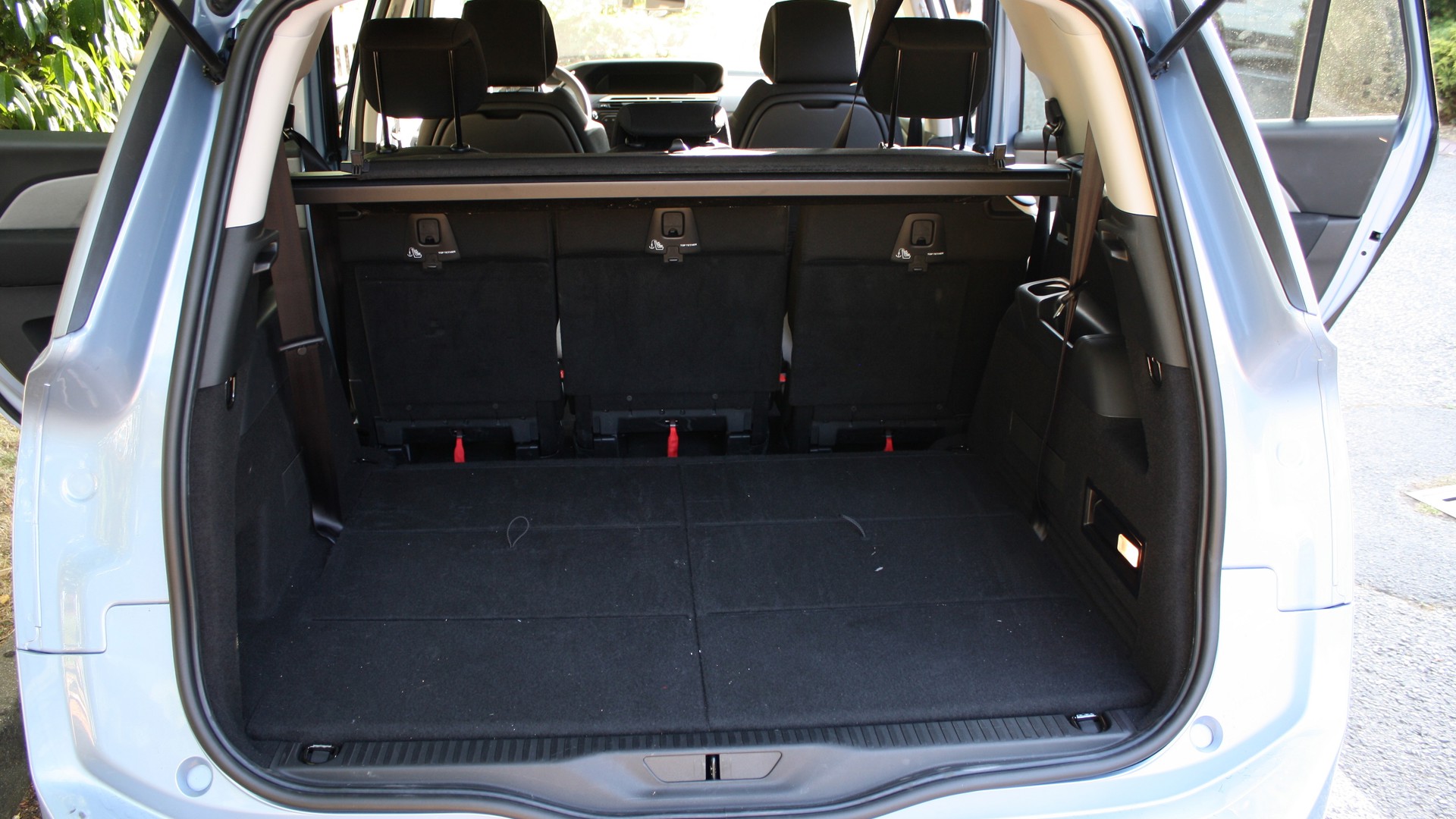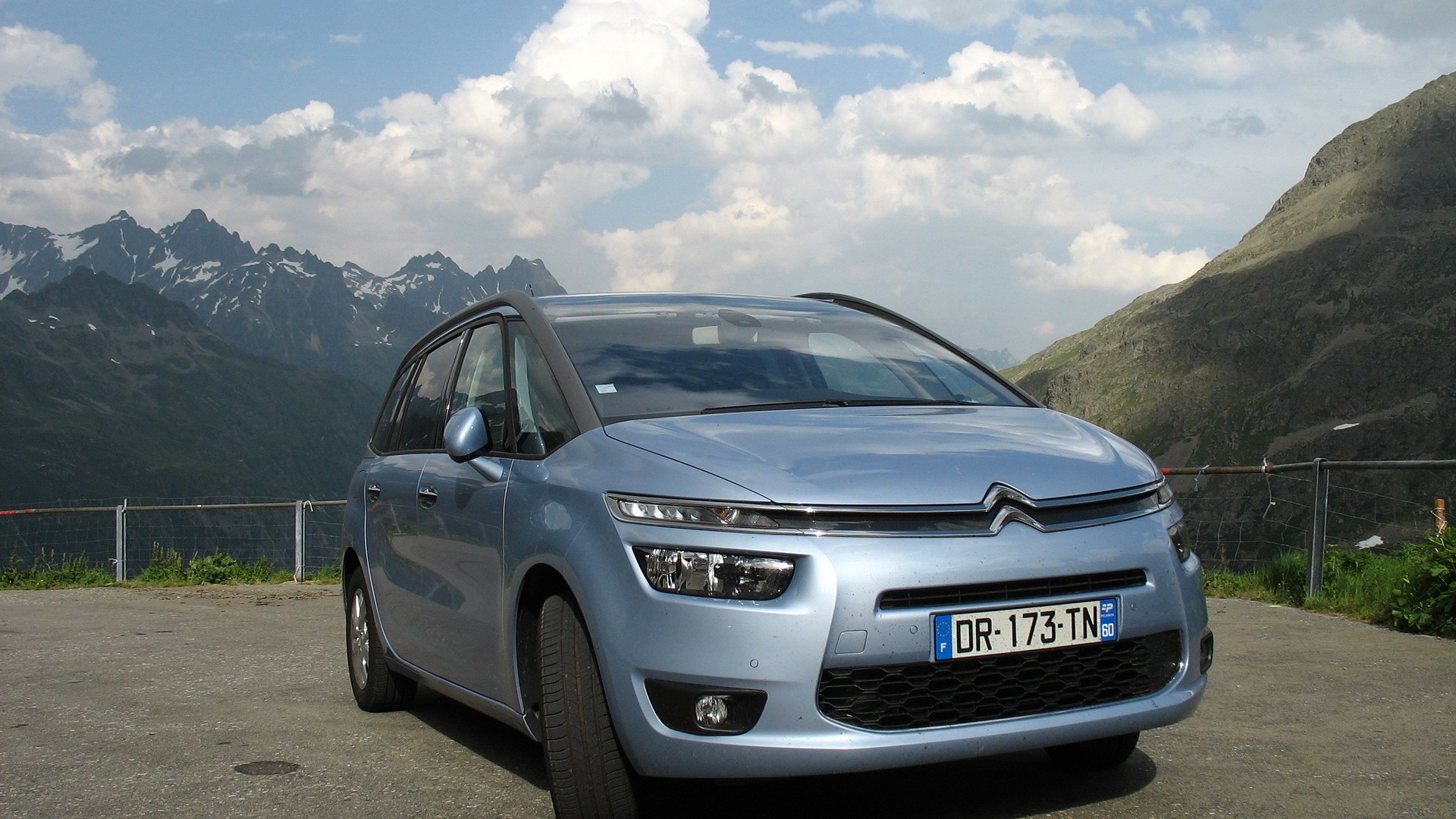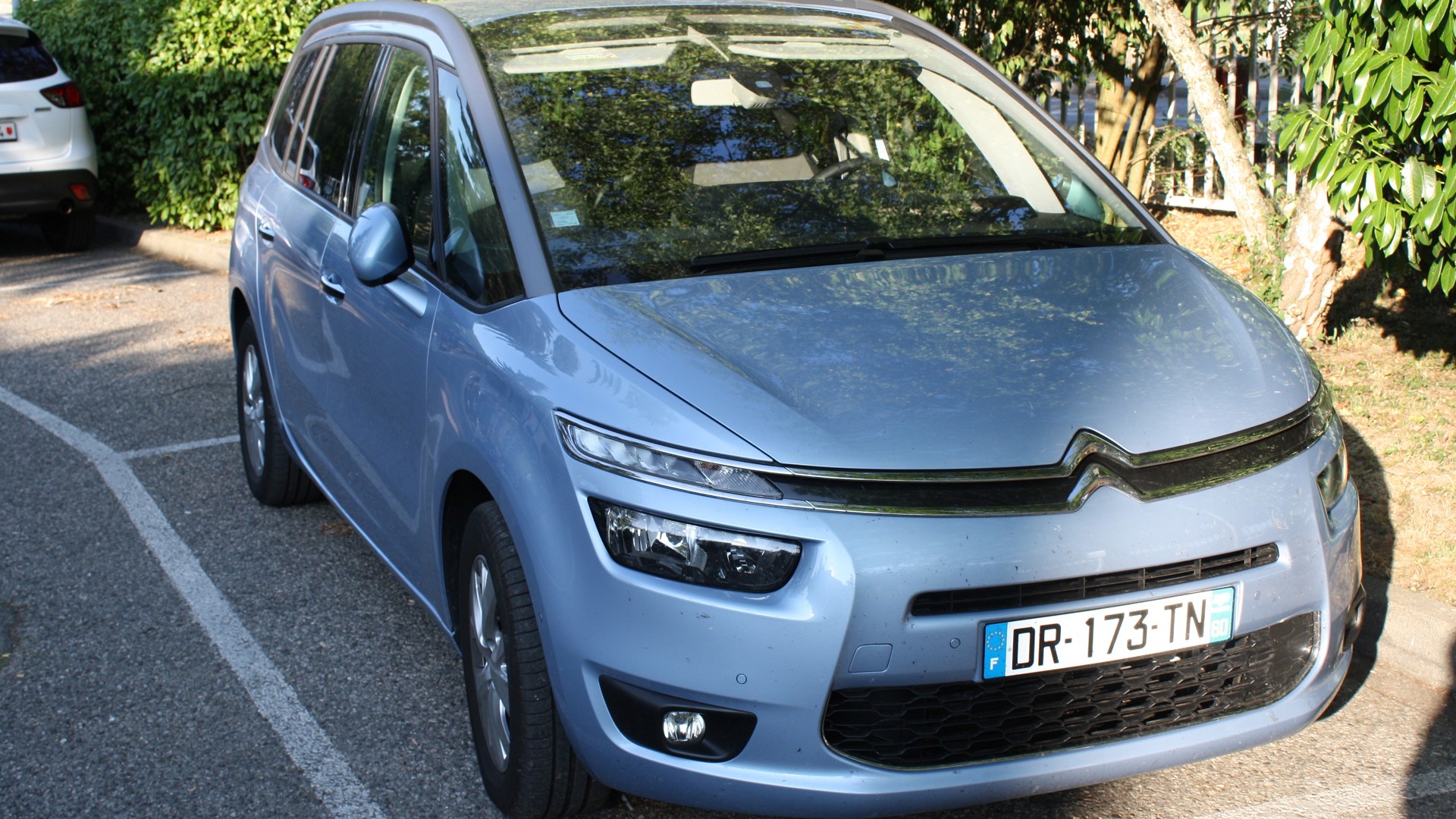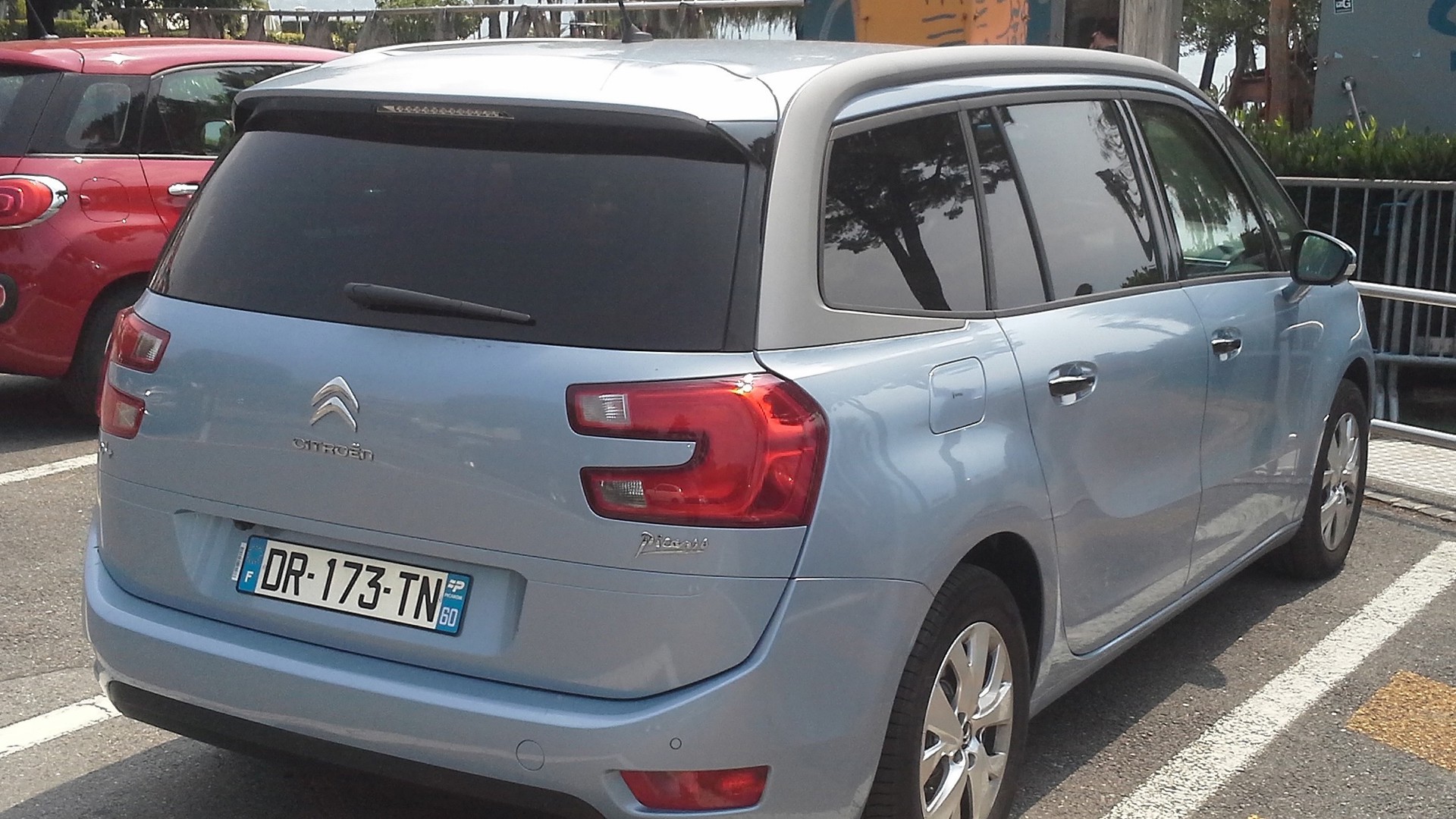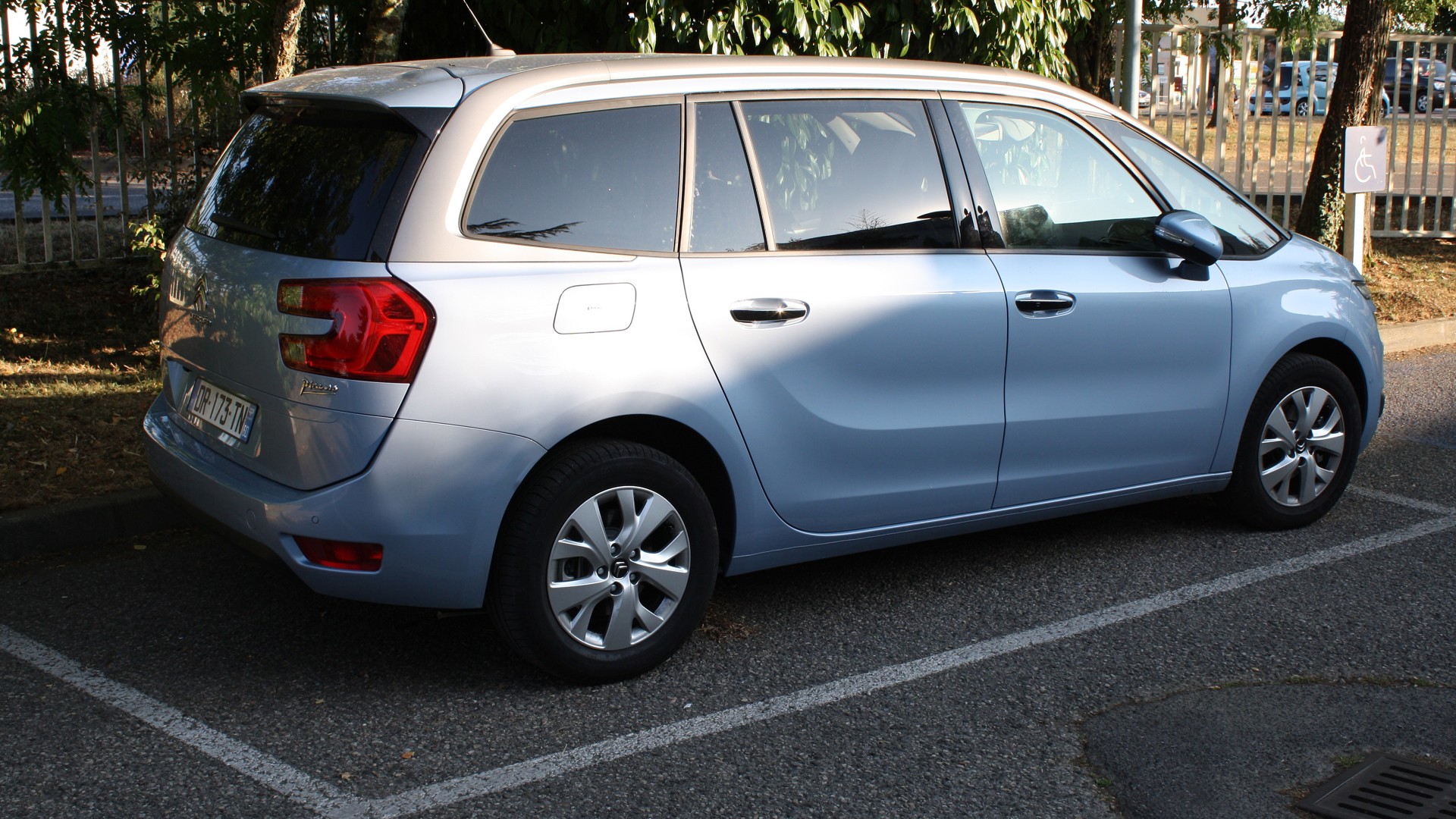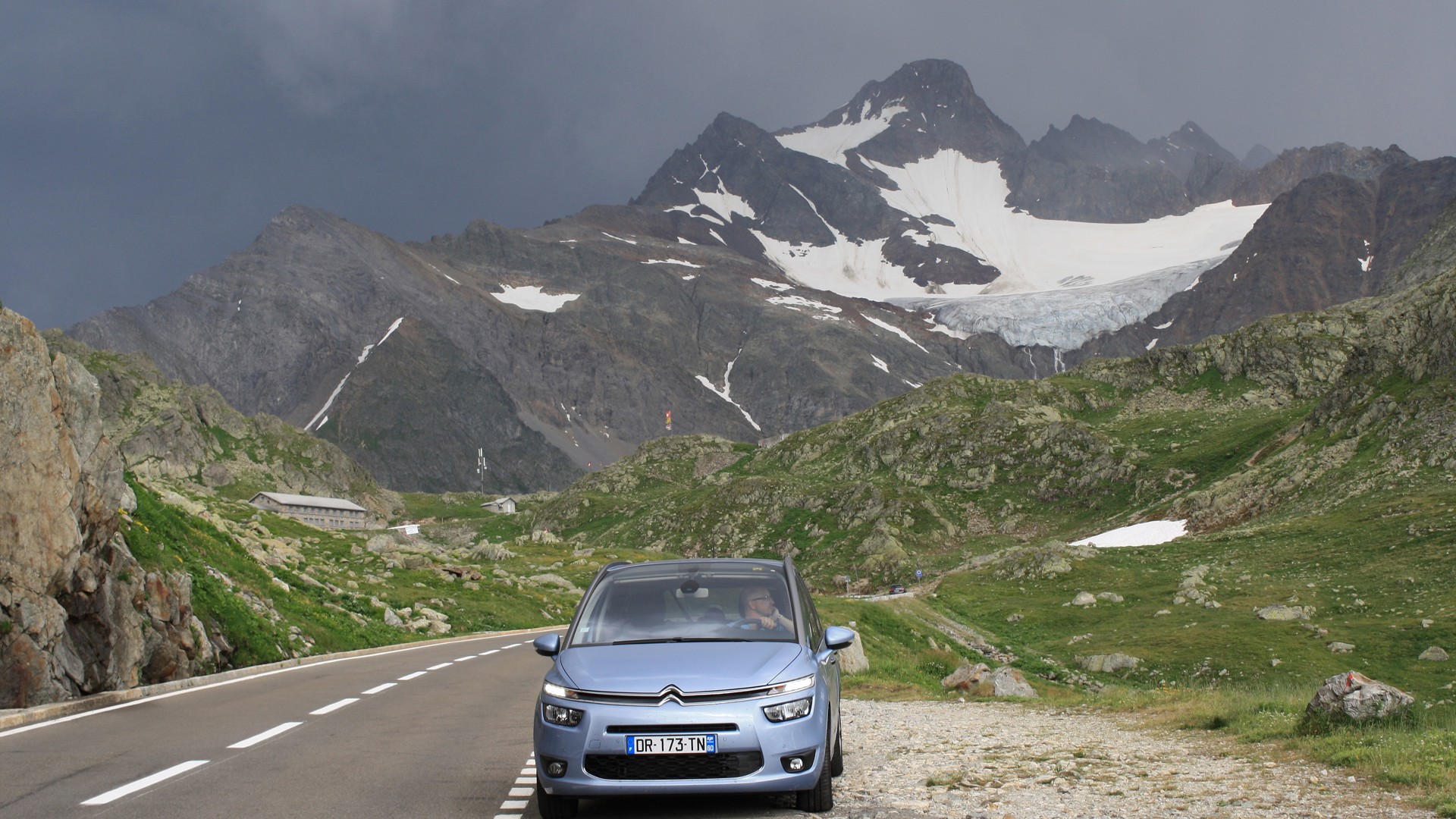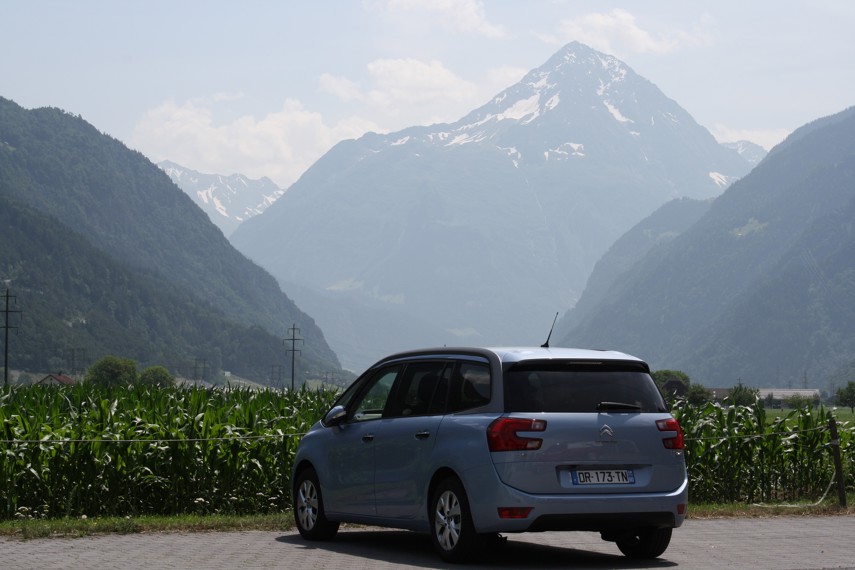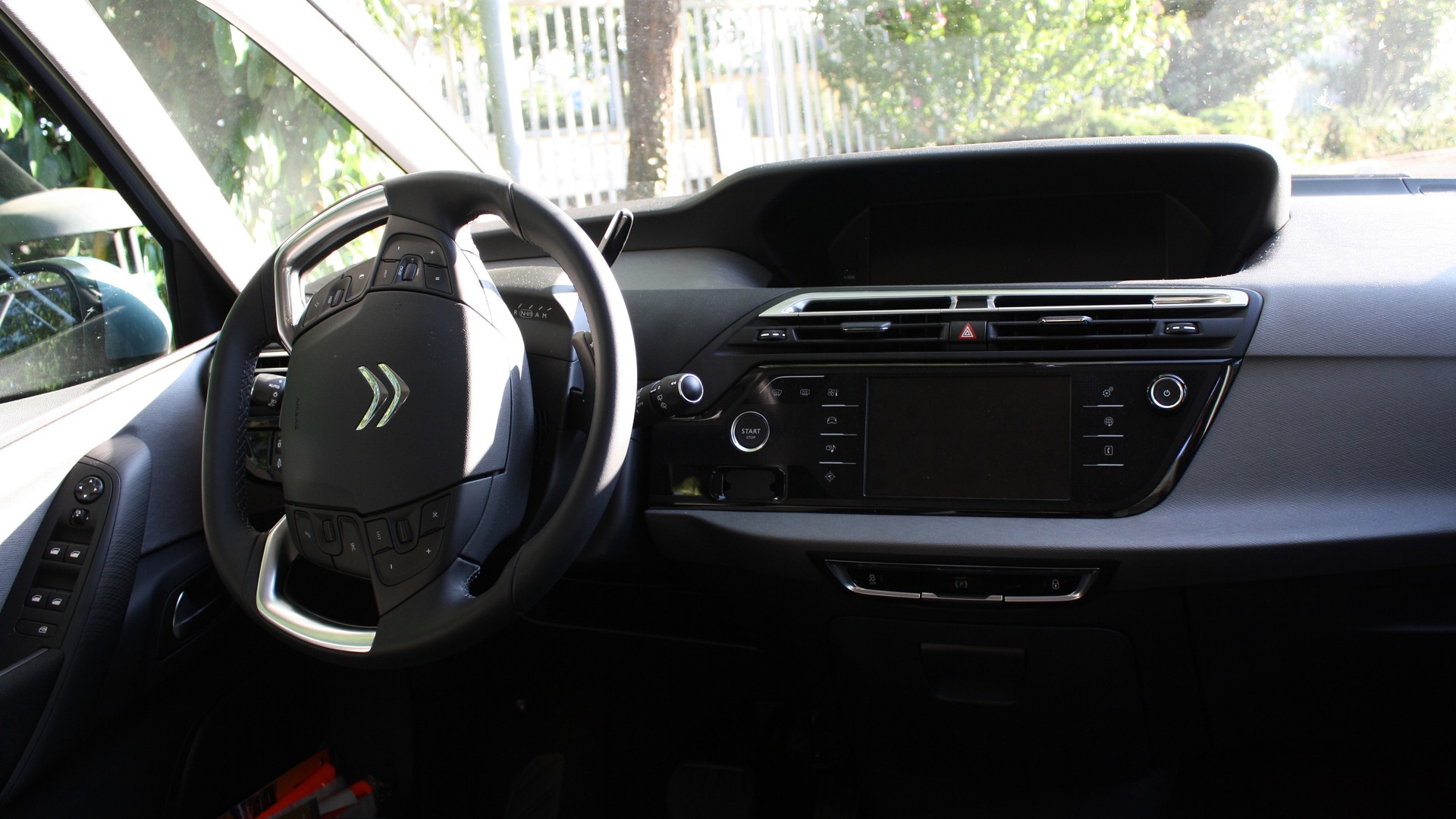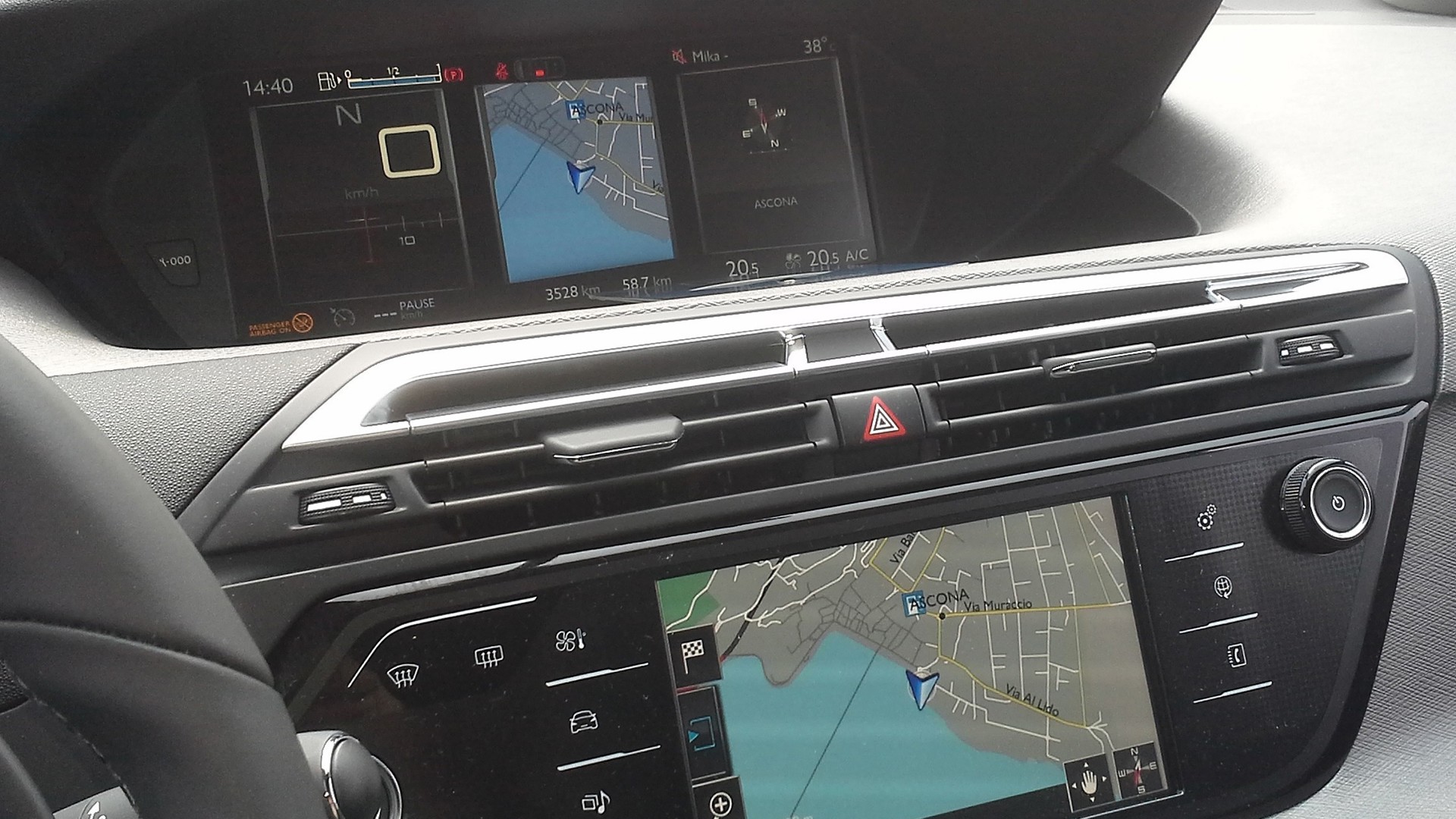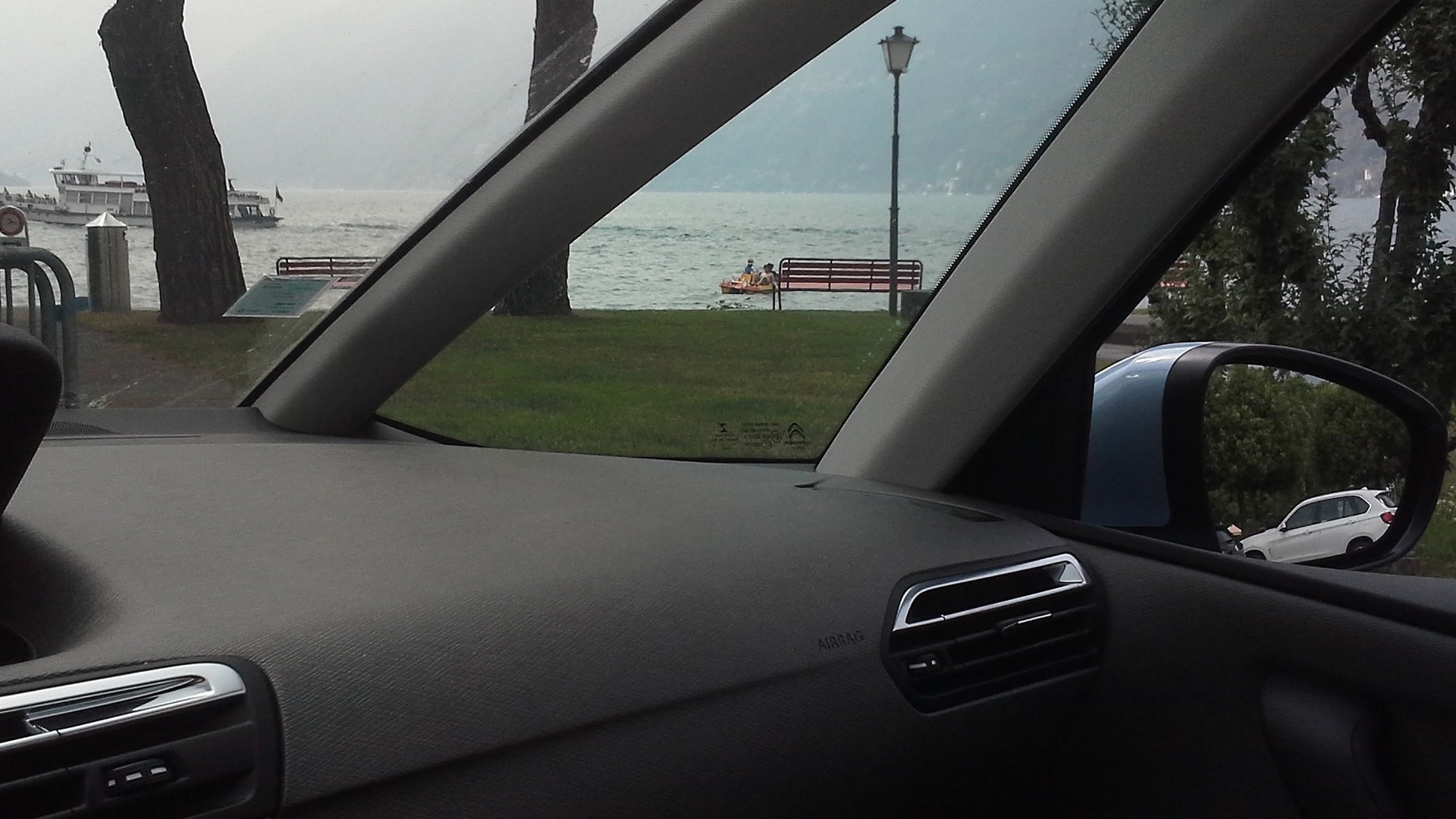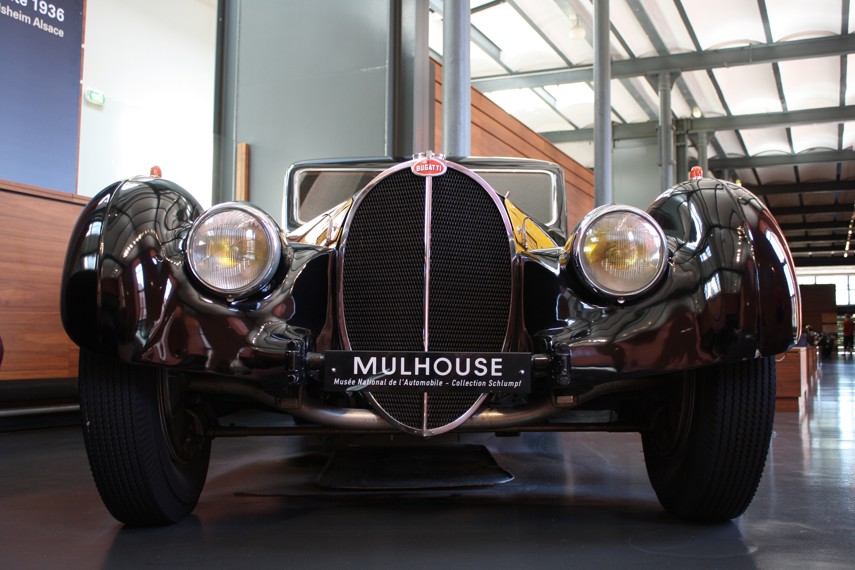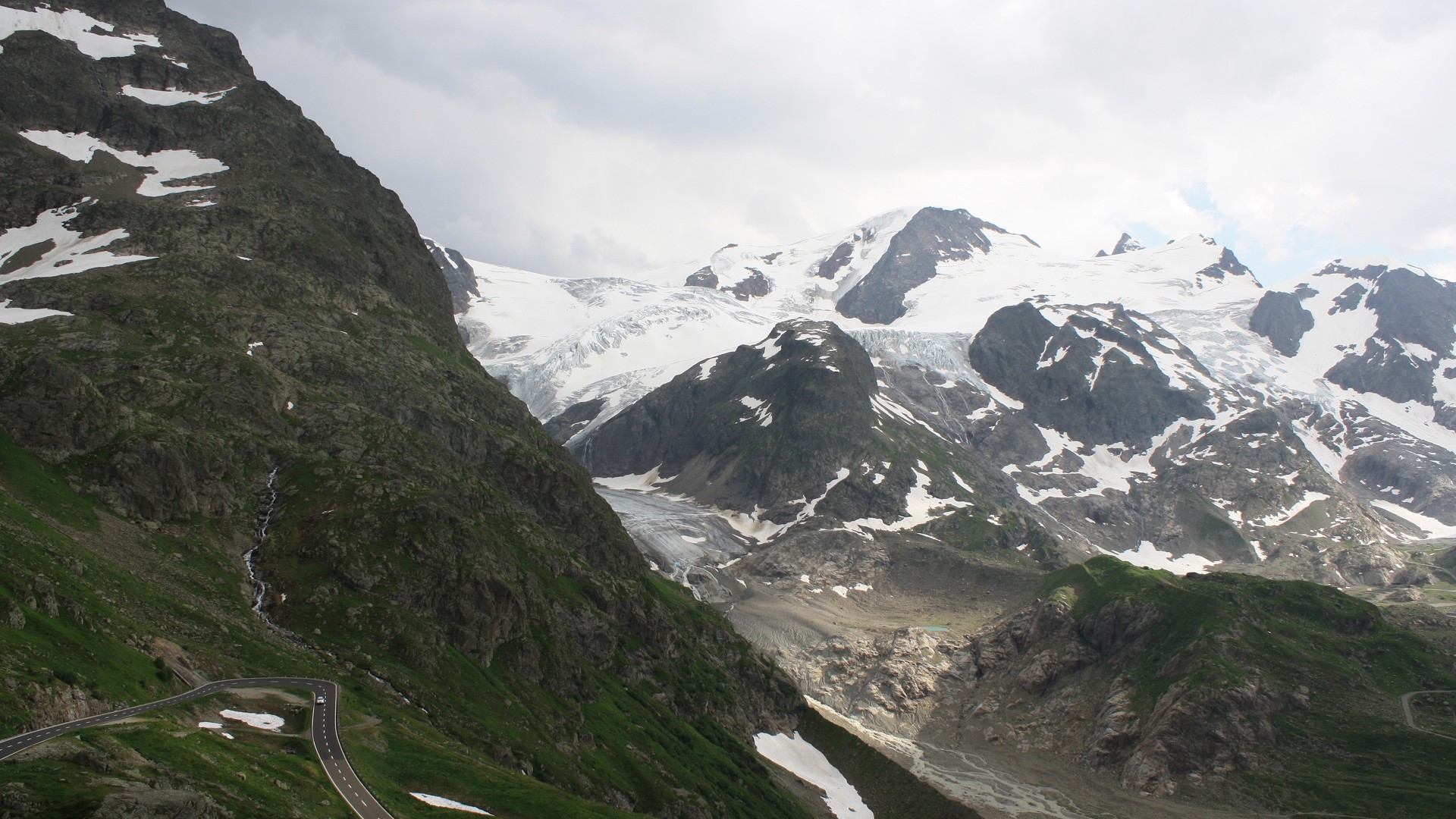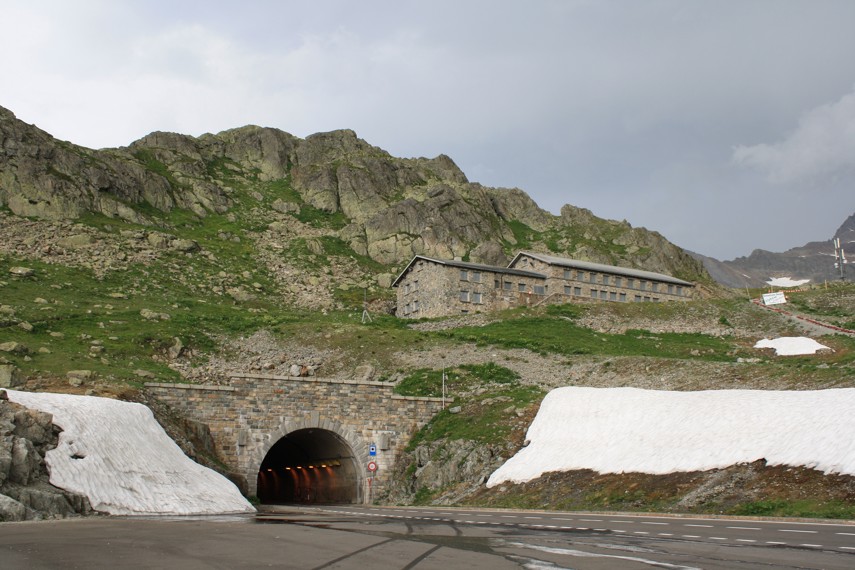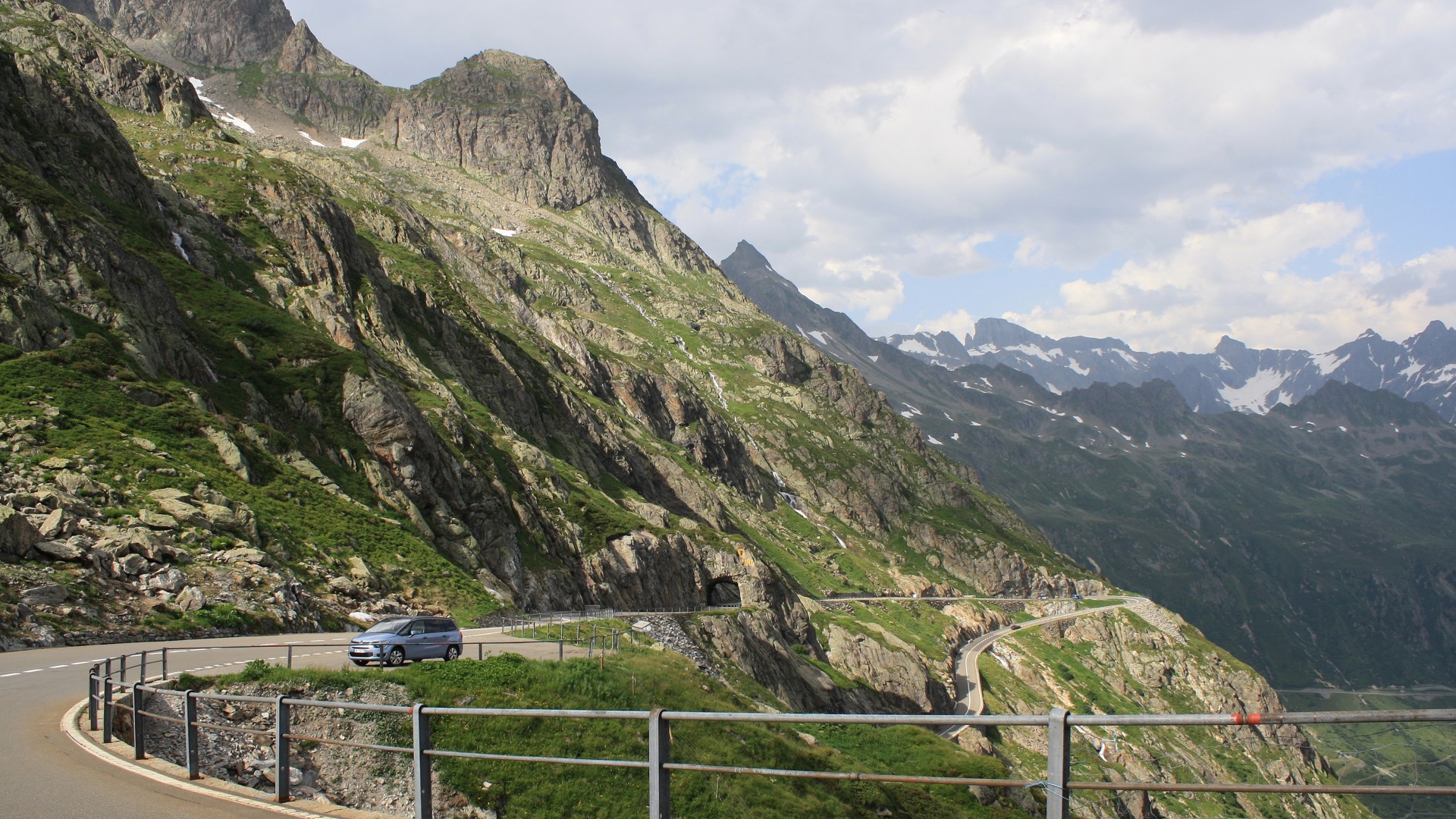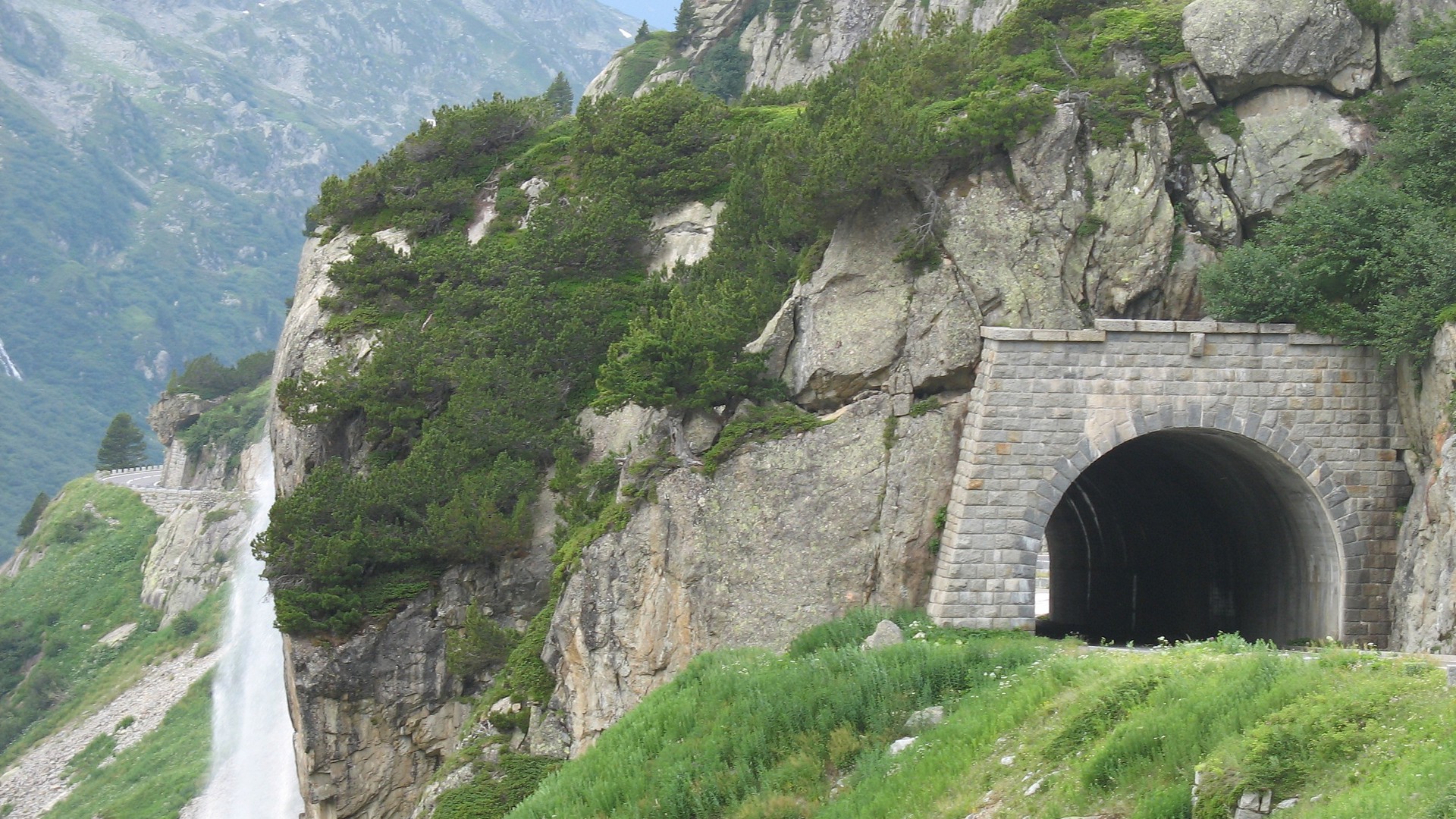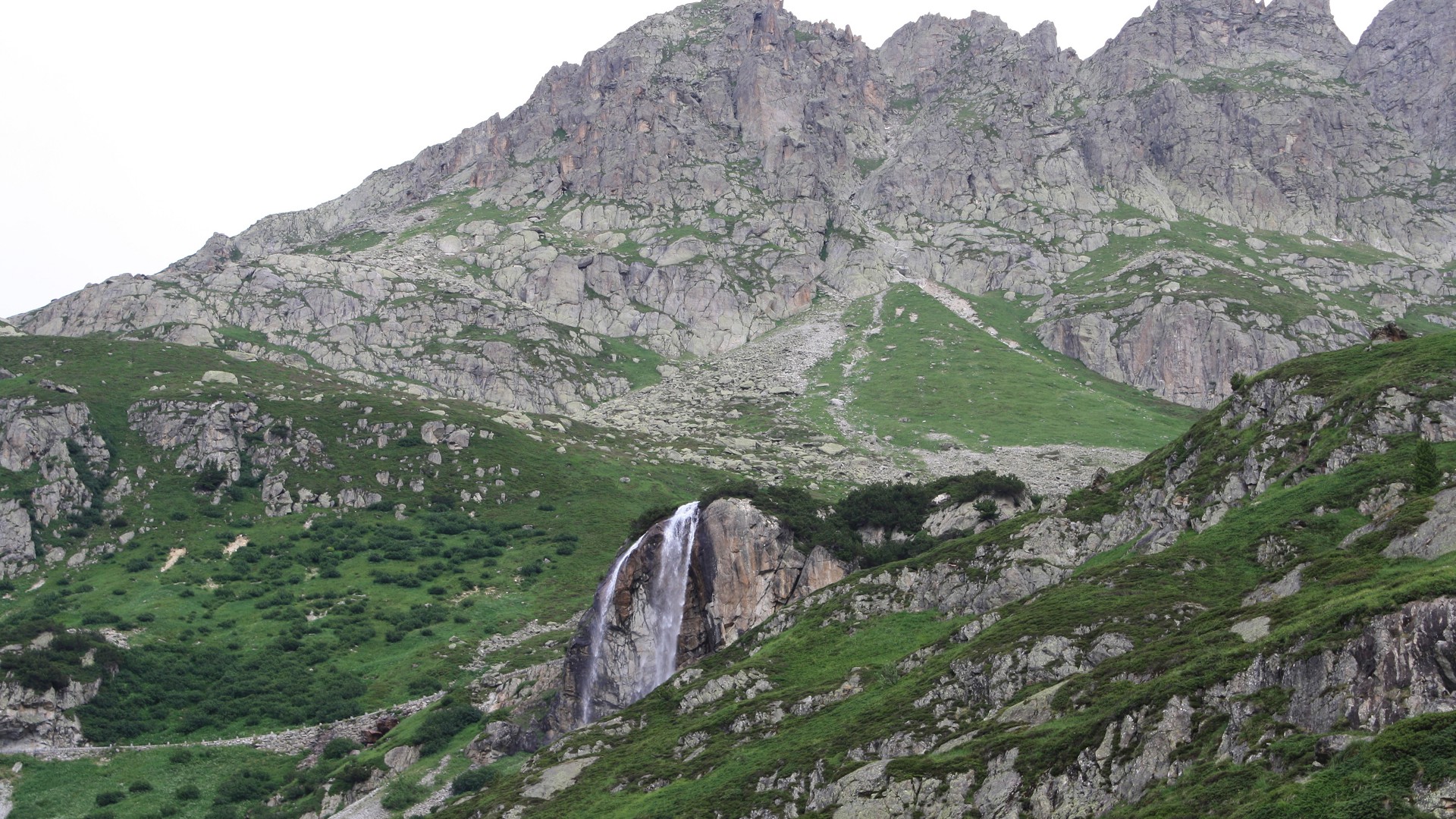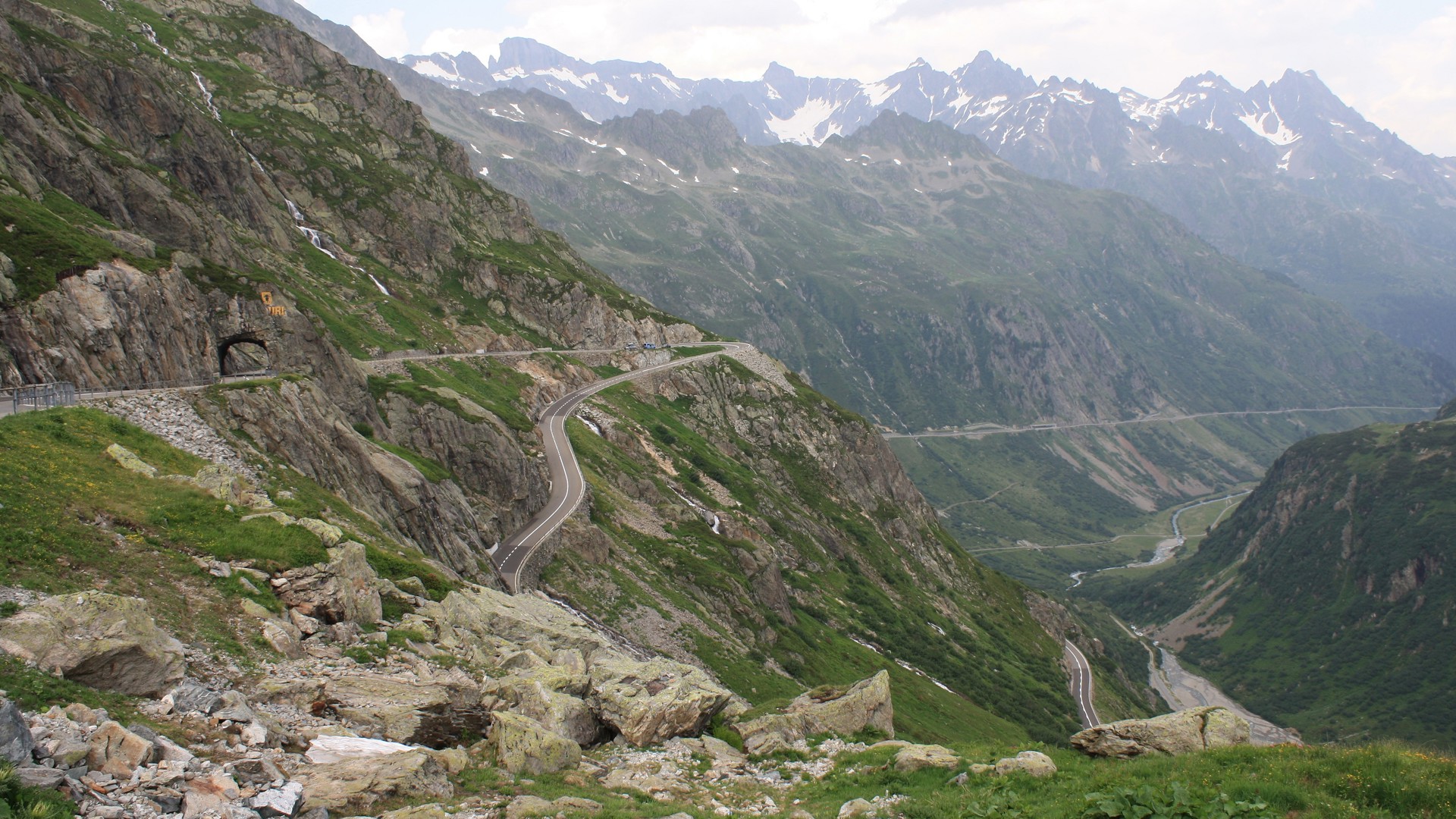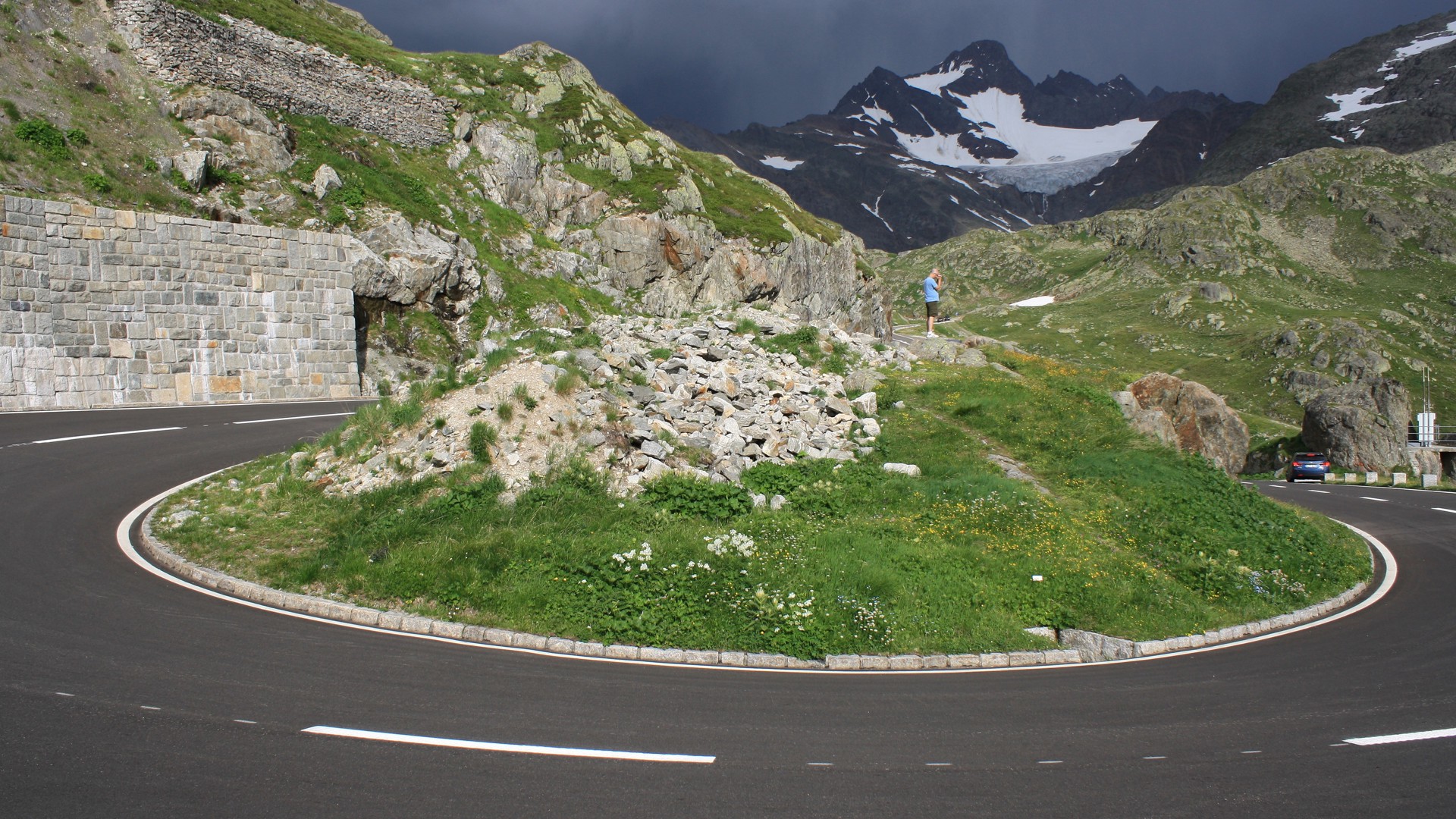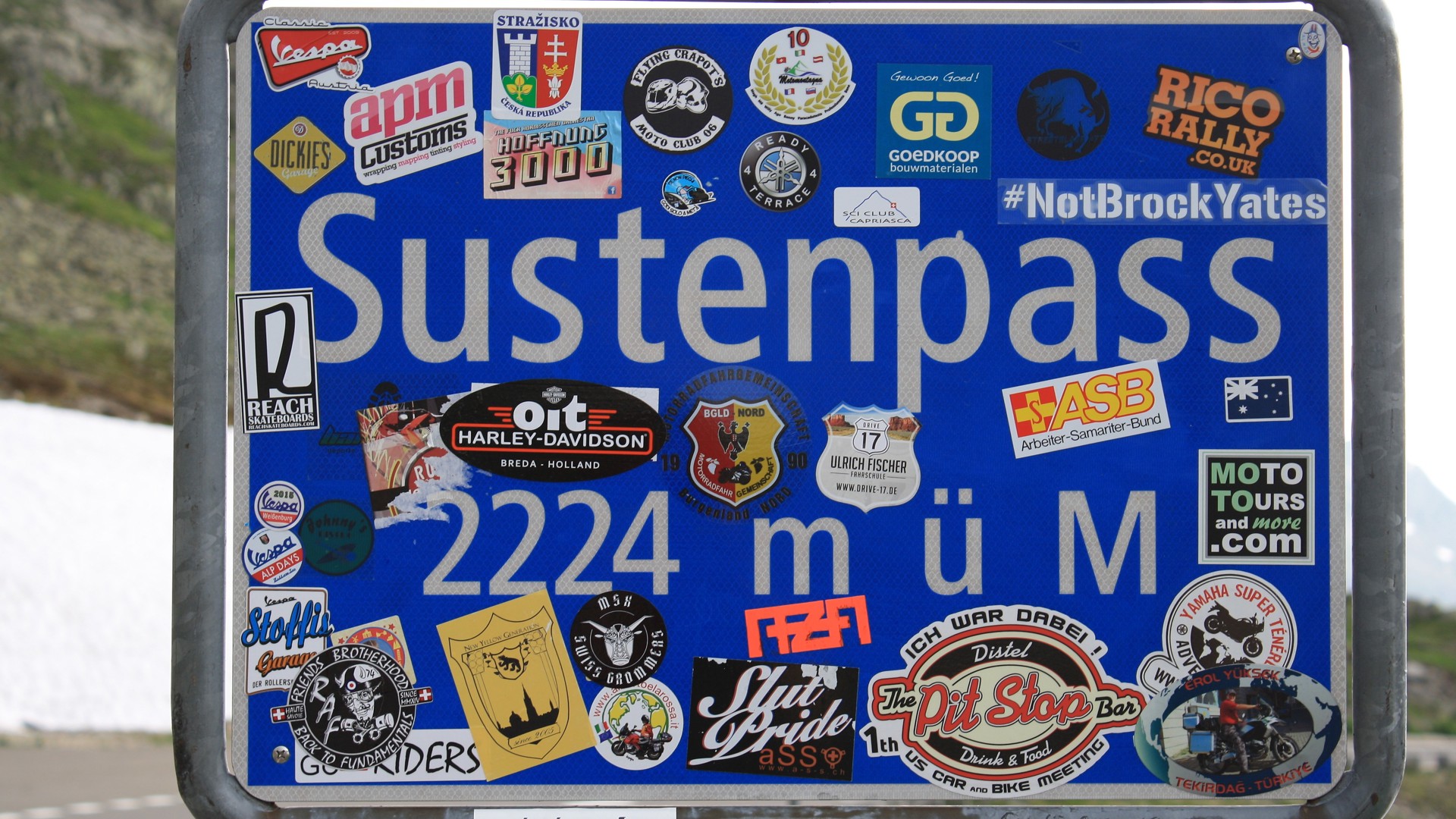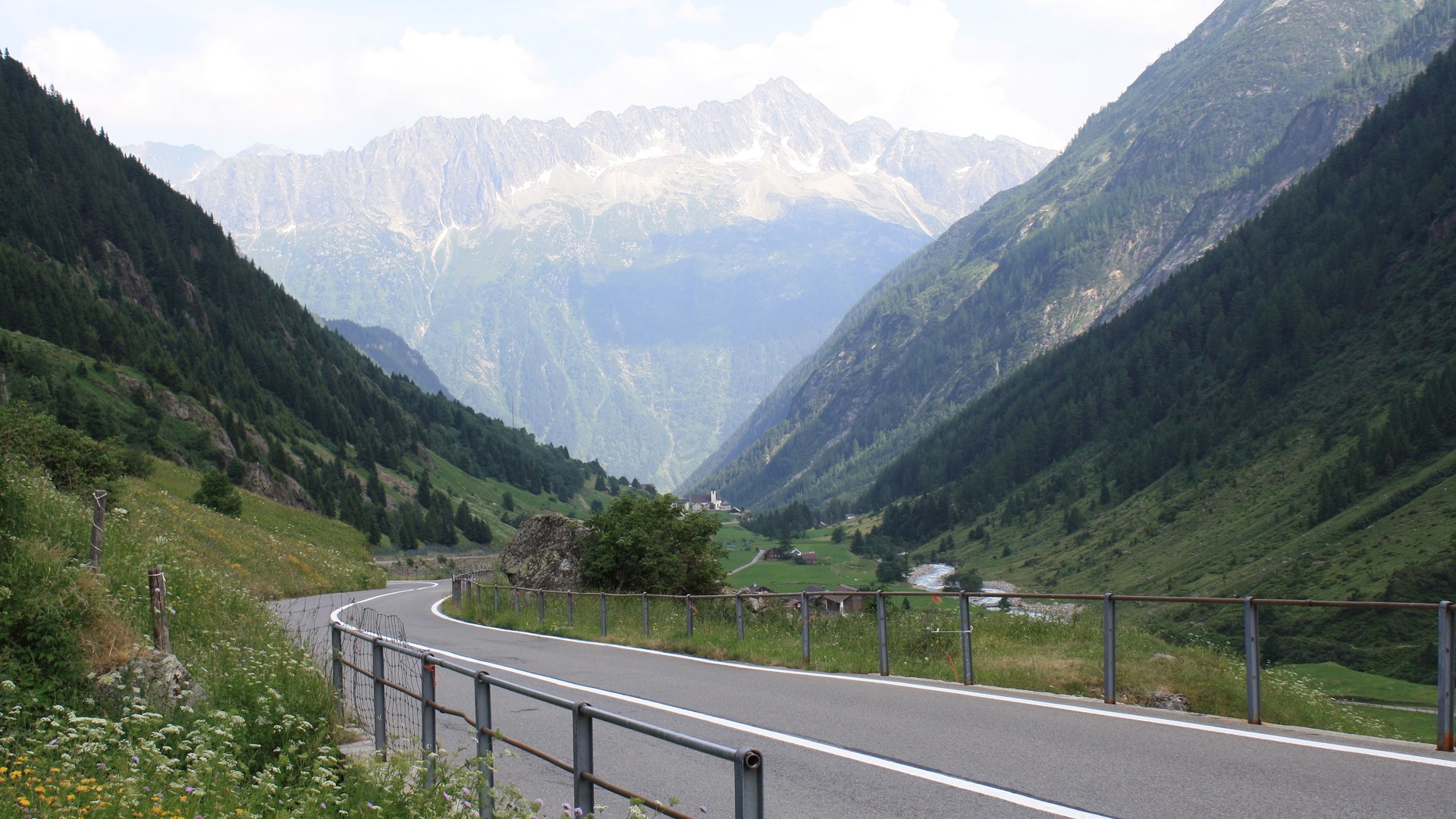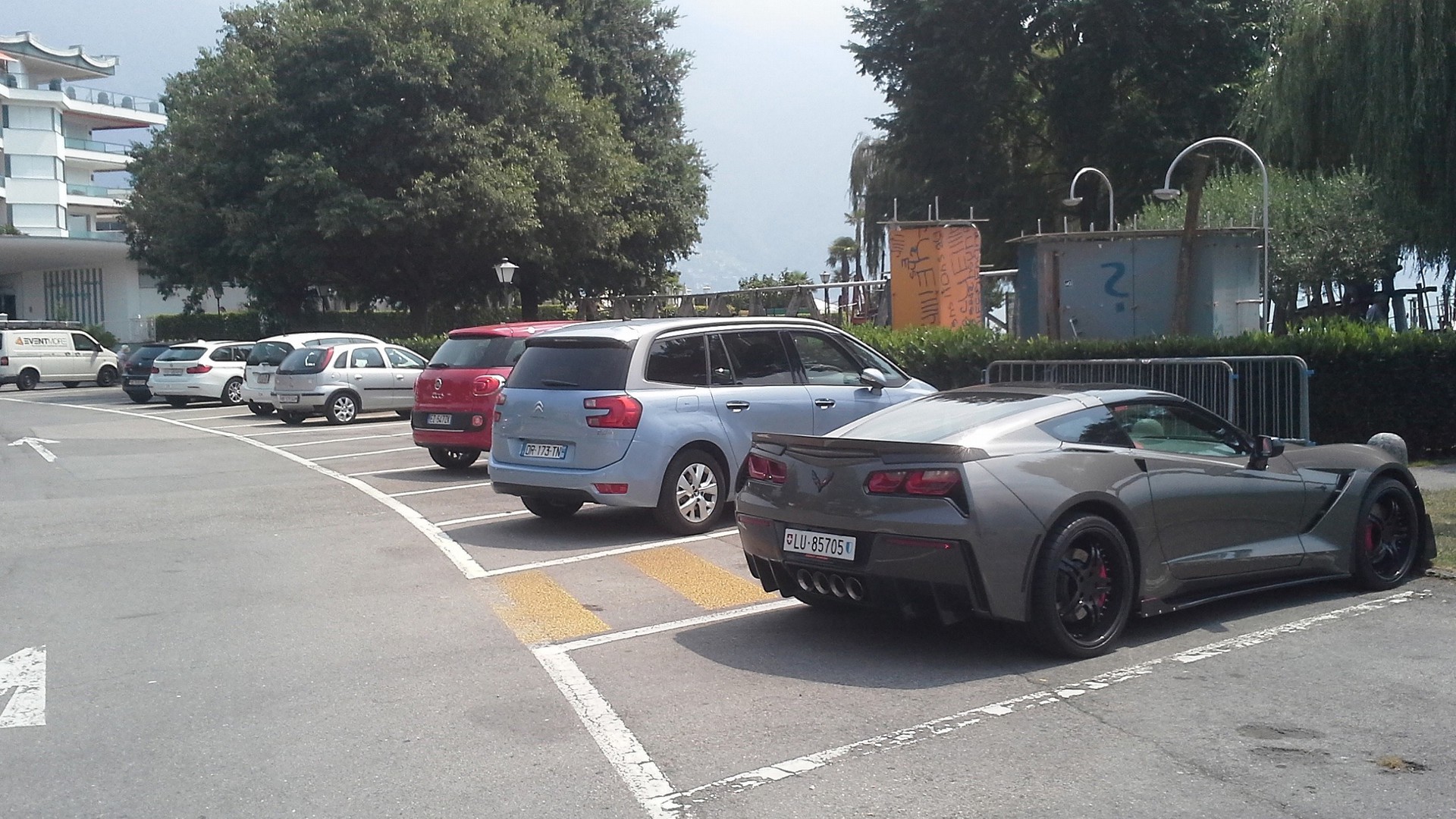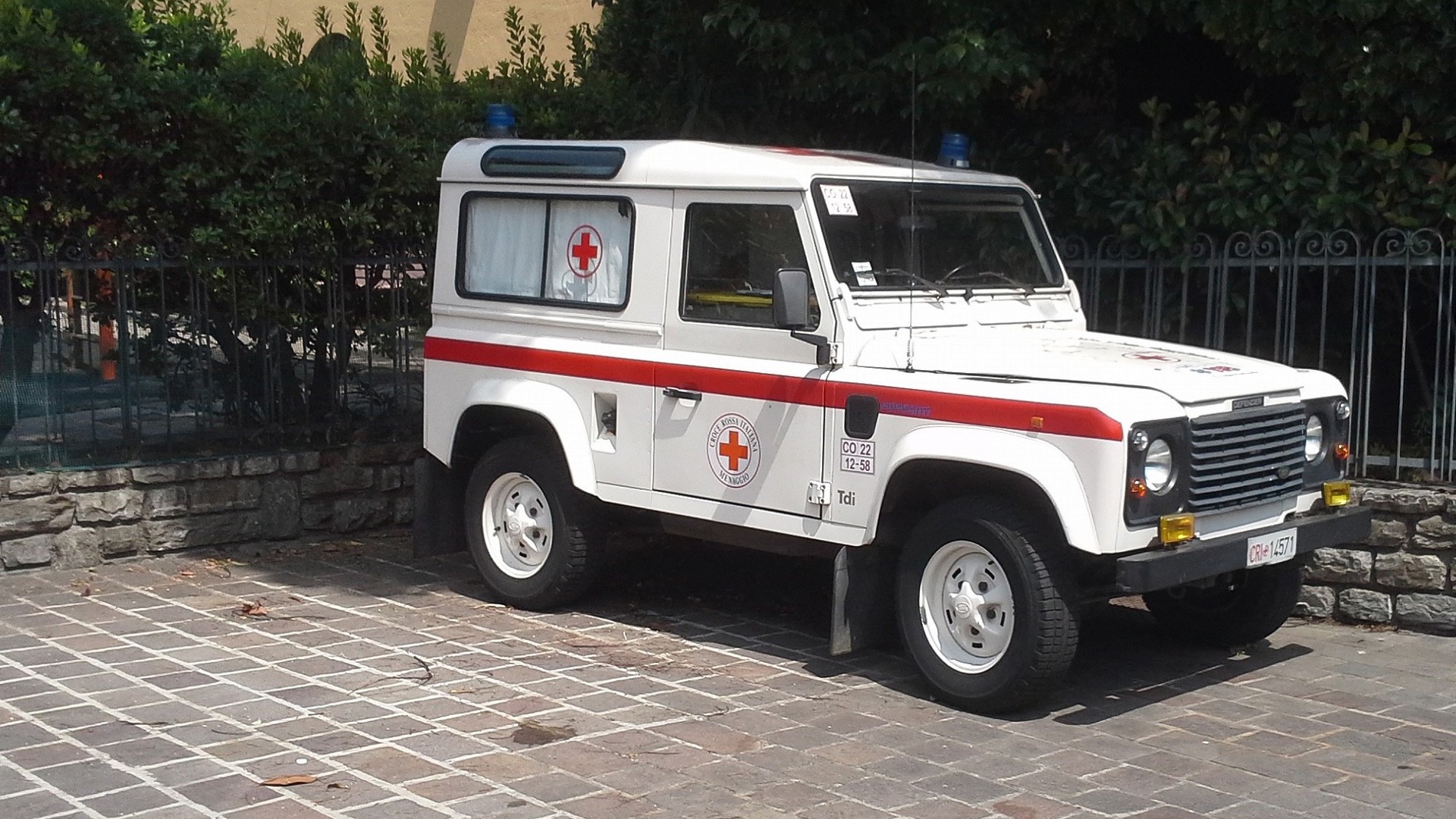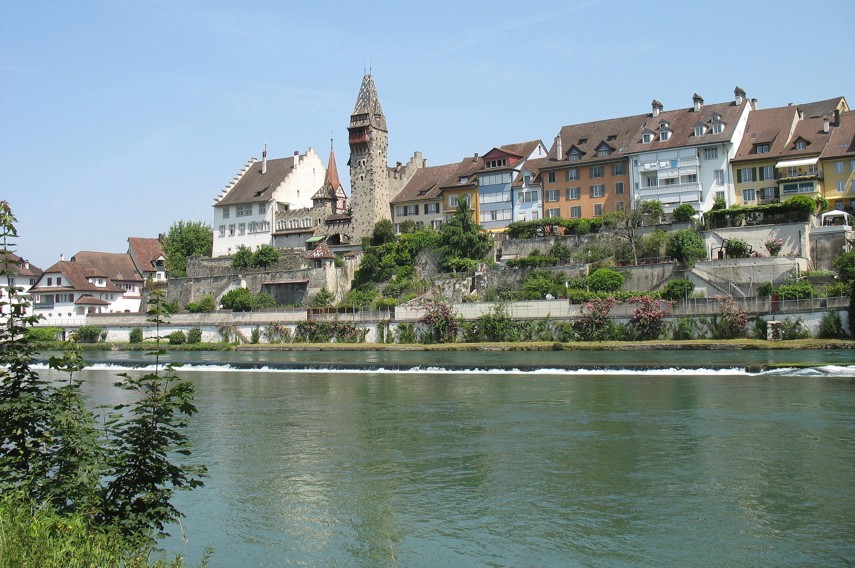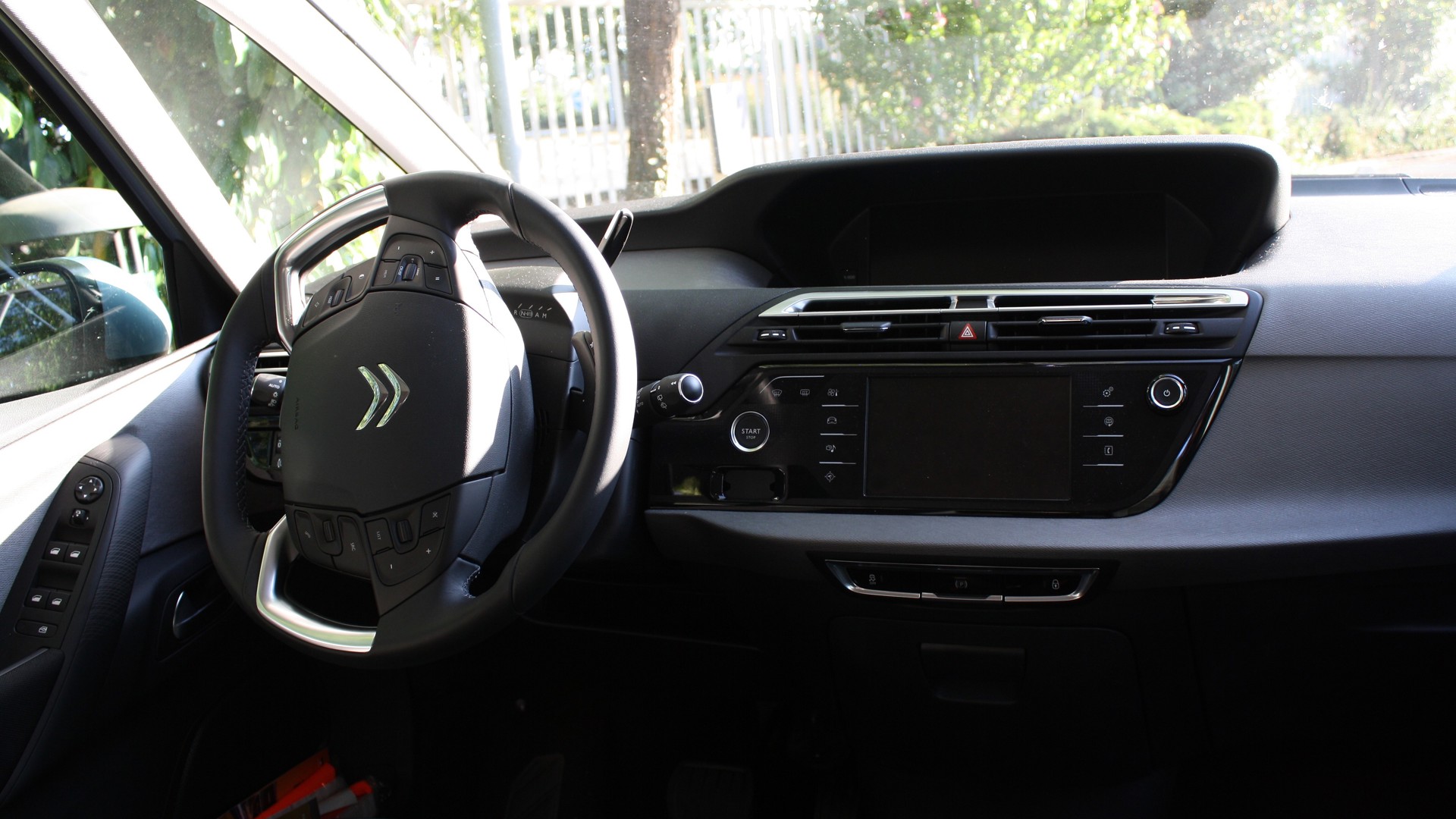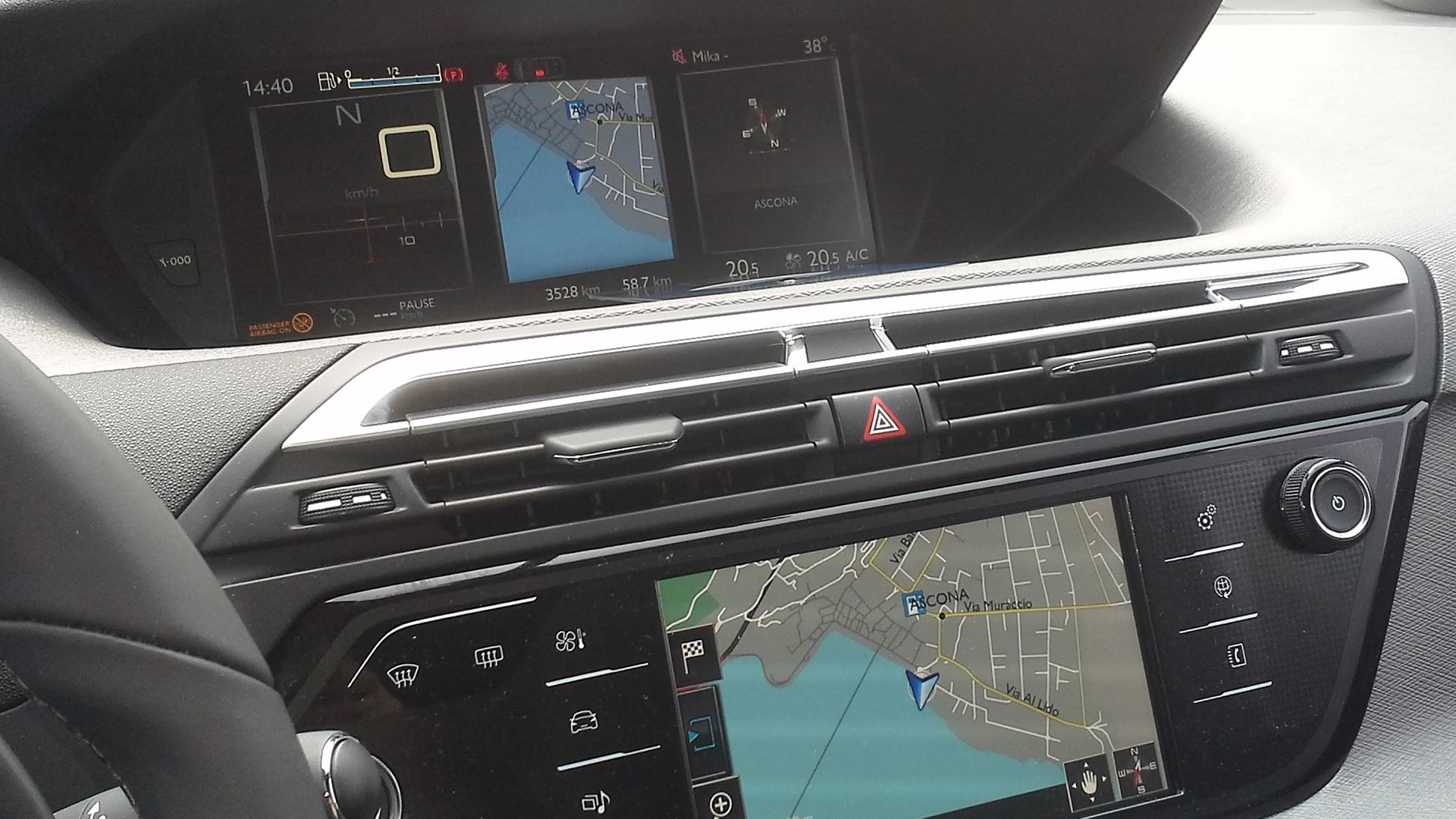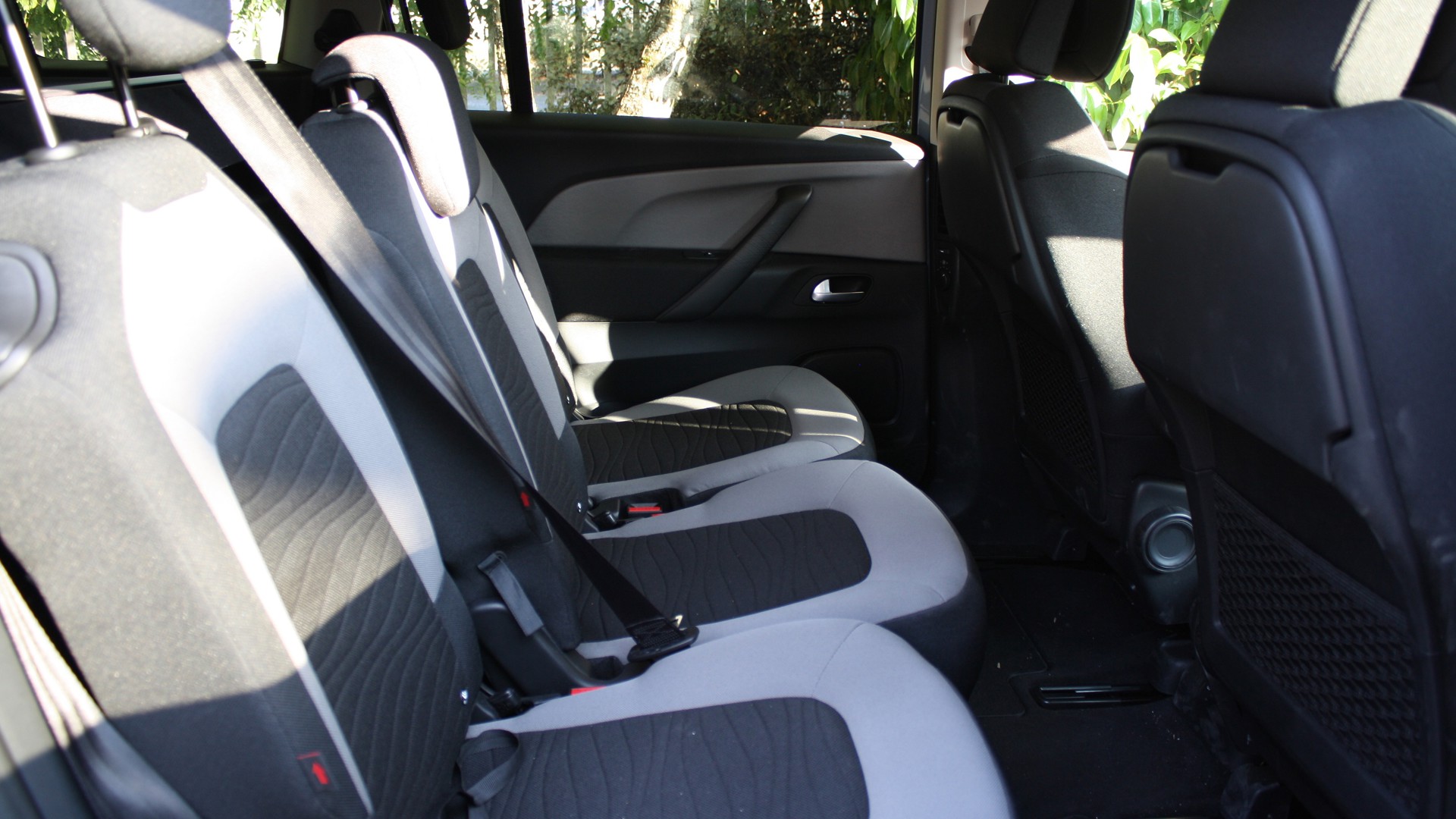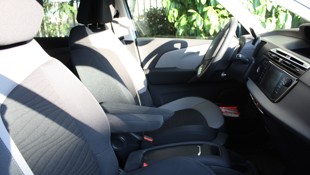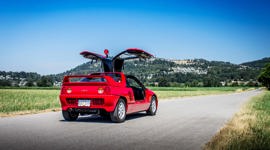To car guys, family vacations are the perfect excuse to plan an epic road trip, and this year the plan was to do an extensive tour of Switzerland. We began our journey by staying four days in Paris, giving us time to walk off our jetlag and visit quite a few bucket-list worthy attractions. My extended list had, of course, a few car-centric extras, namely the French manufacturers’ factory stores on the Champs Élysées. It’s there in the stunning Citroën Colours store that I looked at a very detailed 1:43 scale Grand C4 Picasso diecast in light metallic blue before placing it back on the shelf. Twenty-four hours later, I would kick myself.
After walking all over Paris, the girls were begging for wheels. My car-guy challenge was finding a European rental car that could seat five in comfort while allowing for three weeks’ worth of luggage in the trunk. Since our Swiss relatives would tag along on a few day trips, the rental car hunt had narrowed to the “5+2” MPV category. I was first offered an Opel Zafira Tourer at the rental counter (the Chevy Orlando’s prettier – but not bigger – German cousin), so I politely asked for a French-made option, and sure enough, they had a Citroën just returned that morning and if we were prepared to wait 15 minutes, they would prep it for us.
We really nailed the rental car lottery. Our Citroën Grand C4 Picasso was nearly new, and with only 2,000 km on the odo, it also smelled new. It came with built-in navigation, whose eight-inch touchscreen and secondary display promised easier use on the go than the small handheld we had brought along. This MPV also came with a turbodiesel engine, a cargo cover and an automatic transmission with flappy paddles. The Picasso’s interior configuration was ideal for us. The second row is made up of three identical bucket seats, so equal treatment for all. The outboard seats face flip-down “airplane” trays and passengers back there have their own HVAC controls. Room in that second row is impressive, and headroom is a non-issue front to rear. With the third row stowed, the trunk offers a flat load floor right at bumper height, perfect for heavy luggage. We had no problem fitting a full-size suitcase and four carry-ons, plus backpacks and camera gear, all hidden under the cargo cover.
This van offers a plethora of cubbies, including hidden floor compartments in the second row and behind third row, plus a huge front console storage bin that swallowed an SLR camera with attached zoom, a video camera, guidebooks and whatever else we had lying around. Keyless access meant not being able to lock the keys in the car, another plus on a family vacation. If the girls did read a bit of deception in my face, it was strictly because this van was identical to the diecast I did not buy at the Citroën store – right down to the colour. Oh well…
Taking the car out was akin to getting a shuttle out of the bay of the Enterprise. The controls in the Citroën are indeed Trekkie-licious: everything is electronic, and nothing is where you would expect it and/or labelled clearly, like the parking brake button in the middle of the dashboard. The shifter is a delicate stick located above the steering wheel, while the wiper stalk is exactly where you’d expect to find a column shifter. A sure sign that slushboxes aren’t de rigueur in French culture: there’s no “D” position. I came to the conclusion that “A” meant “Automatique”, selected that and off we went. The first red light taught us the car has active stop-start, and moving away the very, um, ‘deliberate’ gear changes revealed we were in presence of a single-clutch automated manual.
Soon concrete gave way to fields as we entered the French countryside. The Citroën tracks like a king, the diesel humming a relaxed tune at barely 2,000 rpm while travelling at the posted 130-km/h speed limit. Even when left to its own, the SCT will show you what gear it’s in on a dash display, revealing that we have six of them. The cruise control is infuriatingly complex, but eventually I figured things out and we set sail for the Swiss border. Outbound traffic is light on this Monday morning, so we make good time despite sticking to the speed limit. A hundred-and-thirty is already a pretty good clip with family and luggage, so we leave it at that, even though we’re getting passed a lot by the locals. Trucks seem to obey to lower speed limits, so I still got plenty of left-lane time and took advantage of the “three-flashes” function of the turn-signal stalk.
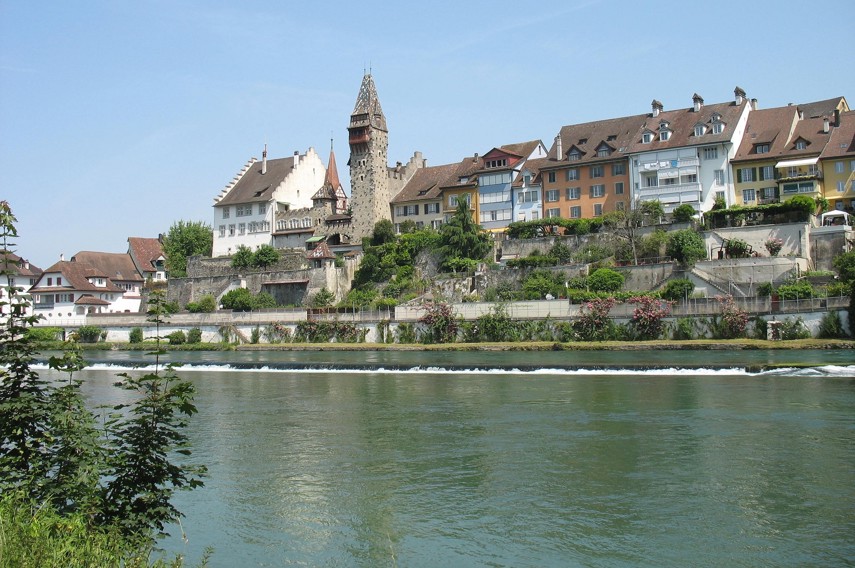
Stopping in Dijon’s charming medieval town centre for lunch, we found that parking the Picasso was easy thanks to excellent visibility all around and a narrow and long footprint. Heading back to the highway, we’re happy to discover that the Citroën’s navigation system will keep previously entered destinations in memory; we select our hotel in Mulhouse and off we go. It’s here in Dijon that I discover one of my few gripes with our steed. The combination of transmission, stop-start and hill-holder makes for clumsy or seemingly “late” starts at uphill traffic lights. Not enough throttle yields glacier-like take-offs, too much throttle has the car going “Whaaaaat?”, trying to sort out what you’re up to and suddenly lurching ahead. Eventually, I Goldilock the pedal and get the right combo. A slight pressure won’t trigger forward motion, but will start the engine, a preset of sorts, and soon enough the Villeneuve in me stays ahead of all these Arnoux.
Away from the stoplights and stop-start, the Picasso is a fantastic long-distance machine. French cars were known back in the days for their comfort and general smooth way of moving about, and this 2015 Citroën proves that those genes are still baked in there. Finally arriving at our hotel in old town Mulhouse, we discover that our “basic” rental Picasso comes with a whole bunch of sensors at each and every corner, helping me cradle the van between a wall and a Golf in the narrow carpark, back-up camera helping.
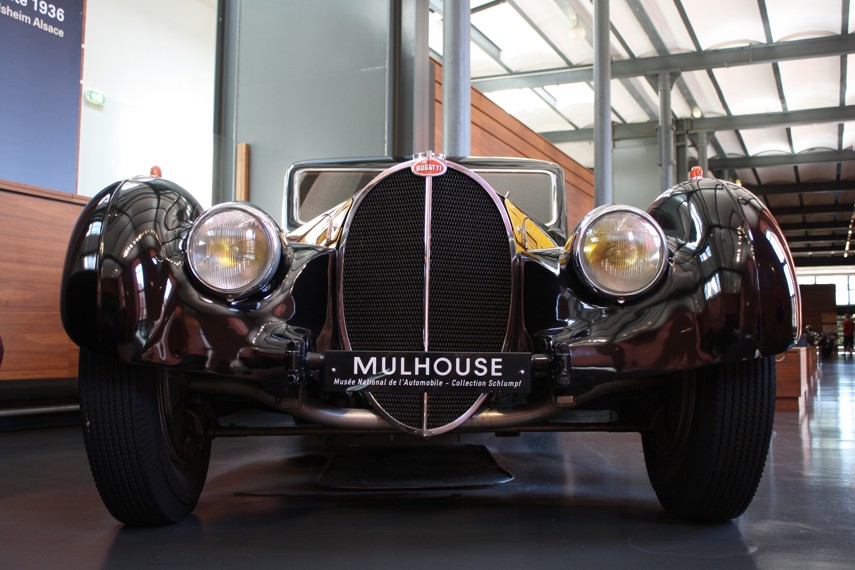
Mulhouse is home to the Cité de l’Automobile, the world’s largest car museum, a place that should be on every gearhead’s must-see list. Nowhere in the world will you ever see so many Bugattis under one roof, including the Holy Grail of the automotive collecting world, the Royale. Out of the six Royales ever produced by Bugatti, two are at the Cité, and the famous “7th Royale”, found as a never-completed bare chassis and built to original Royale specs by talented craftsmen, is proudly displayed at the Museum’s entrance.
After visiting the museum, we crossed the border, bought our Swiss highway permit and stuck it way up high on the Picasso’s mega windshield. The Citroën furthers the space shuttle experience by having a windshield that must be an auto insurer’s worst nightmare, and at the opposite end of the spectrum, a glass shop owner’s dream. The glass starts up at the cowl and goes right above the front passenger’s heads. Two sunshades slide out of the headliner to block off the rays, and conventional sun visors are hung at the end. Both units are split apart by the pillar holding the automatic rear-view mirror. Thin A-pillars combined with front sidelights contribute to excellent forward visibility. Really, from up front, this is as panoramic as it gets, giving me the impression of driving a narrow motor coach.
Arriving at our destination, we unpacked the Picasso and turned it into a seven-seater. The cargo cover is easy to remove, and pulling up each half of third row is a one-hand affair. Of course, the trunk turns into a shelf when all seats are occupied, but it offered just enough room for backpacks and water bottles for our trip to the mountains with our Swiss relatives. With seven people on board and only 1.6 litres under the hood, I did not expect much schnell, but the diesel’s torque kept up with traffic without a hitch. Besides, by the time cruising speed is reached, it’s time to slow down for a roundabout. On rural Swiss roads, they’re everywhere.
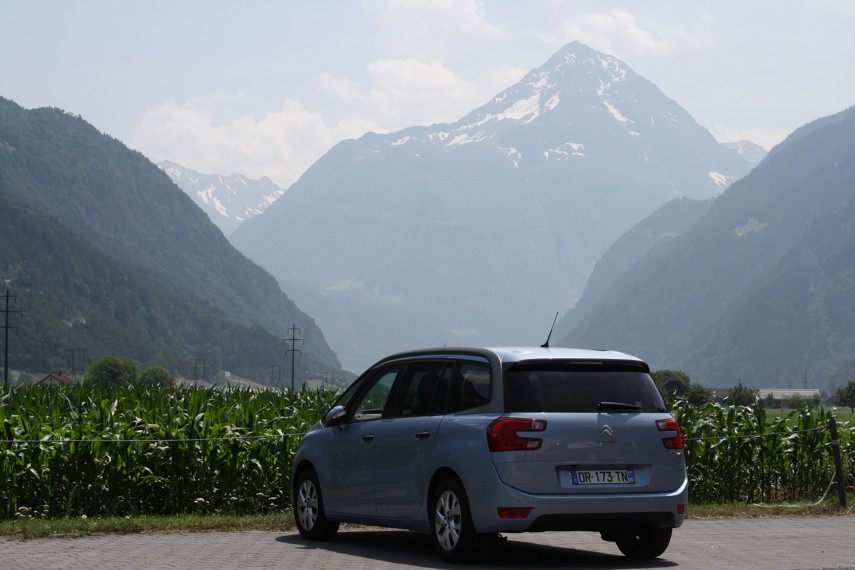
It was on a rural road that the Citroën’s SCT tried to kill us. In postcard rural Switzerland, splendid scenery abounds, and in one of many photo-op stops, I pulled out on a farm access. Once pics were taken, I had to back out of there on a two-lane road, with very little sight distance due to topography. Seeing a farm tractor-induced gap coming, I backed out... only to see a car blast in from behind the tractor to pass. Frantically slamming the gear shift from "R" to "A”, wiping the windows at the same time, the car just sat there hesitating on what to do. By the time it clutched first, I was already aiming back at the driveway, cursing, throttle floored for what seemed like ages. I'm still surprised we weren't hit. Never took a chance like that again. If you rent a Picasso, get one with three pedals.
After four days in the Zurich area, we said goodbye to our relatives and left for Ticino, the Italian part of Switzerland. The closer we got to the gigantic rock wall of the Saint-Gothard Pass, the more fantastic the scenery became. The valley gradually closes in on the highway, the road eventually clinging to rock walls underneath avalanche shelters and through bridges and tunnels. Our Picasso took care of lighting our way thanks to its automatic headlights, a real plus when travelling through so many successive tunnels. With no fanfare you get to the mouth of the Saint-Gothard tunnel, a small sign to the right indicating “16.9 km”. That’s the tunnel’s length. The famous concrete “tube” has only one lane per direction, hence its infamous reputation for traffic snarls. Thanks to the road authority app, we kept a close watch on the traffic situation and only made our way to the tunnel once all traces of red had vanished from the maps. It worked.
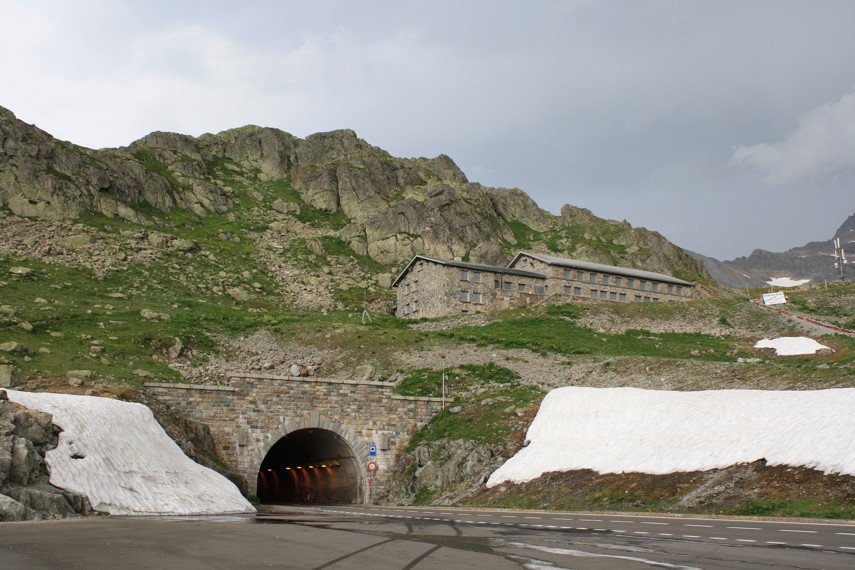
For a Quebecer used to the shabby Ville-Marie and Lafontaine tunnels, the Gothard is so impeccable that it feels like driving through Pixar scenery, despite it being very real and 35 years old. It’s an odd feeling to be driving “inside” for so long, and at 80 km/h, it’ll take awhile before you see the literal light at the end of the tunnel. We had a Twilight Zone moment at the tunnel’s exit – suddenly, everything’s in Italian. For a country with four official languages, it’s puzzling how everything is unilingual. We made good time through Ticino, and crossed over to Italy and found our rental apartment in the hills overlooking Porlezza. Situated at the tip of Lake Lugano, our base for the next three days, 20 minutes from the open Swiss border, was up a narrow road that clings to the lakeside hills.
We all hear stories about driving in Tifosi Land, and Italy delivered. Roads so narrow that they make upcoming Fiat 500s look like motorhomes, blind turns, and tight chicanes stuck between ancient masonry walls. Having mastered my diesel steed by now, the whole road setup was more amusing than nerve-racking, except for the two-wheelers. Italian motorbike and scooter riders are completely bonkers, and will ride your bumper and pass you on whatever side they want, whenever they want. Valentino Rossi probably got his Moto GP skills by commuting.
The heat wave that hung over Europe during our entire vacation never let go, and by the time we hit Como Lake, the Citroën was telling us that the temp was 39 degrees. The French engineers sure got A/C right as our Grand C4 Picasso had no trouble getting the interior Canada-cold, despite the huge glass area. Our stay here was too short, and we left the breathtaking scenery of Lake Como behind, and headed back through the Gothard tunnel toward the Susten Pass, one of the most glorious roads in the world. Within a two-hour drive, we went from a palm-tree picnic in Ascona to walking in eternal snow at 2240 m. I popped the gear toothpick in “M”, as this is serious flappy-paddle territory. The Citroën’s automated manual redeemed itself in the twisties. On such roads, the manual mode makes much more sense than leaving the tranny to its fuzzy logic – automatic mode had us nearly stalling in the steep, sharp uphill curves. Snaking up the mountain, through rock tunnels, underneath falls and around vertical hairpin curves laid on granite blocks on steep hillsides, this road is a driver’s dream and worth the trip alone. Numerous pull-outs enable you to take in the scenery, and hiking paths abound. Part of you wants to stop everywhere to revel in the incredible views, and part of you wants to rip through the curves like that M3 driver we met on the way down.
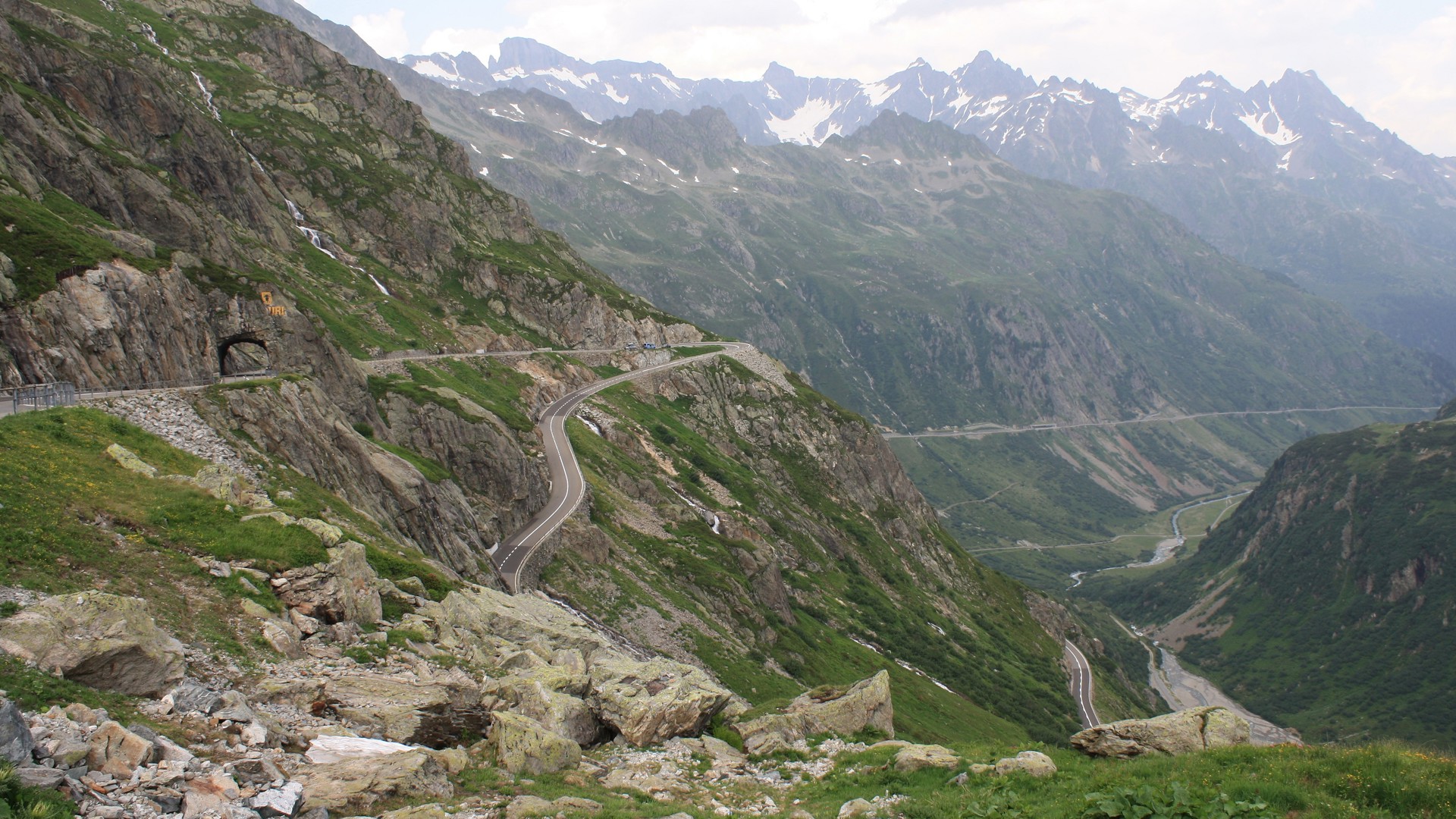
On roads like these, you finally understand why most European cars have such handling finesse built into them, and why their brakes are world-class. The Picasso’s disc brakes never faded, but even though I was having fun, I was nowhere near the pace of that M3! Despite riding on modest 205/60R16 Michelins, we never heard a squeal (well, maybe from my passengers). The fabulous Susten Pass took us through the mountain range to our Interlaken base, and from there we Picassoed on to many hiking spots in the area.
Our epic road trip concluded in the French area of Switzerland, visiting castles, wineries and cheese factories. We said our goodbyes to our blue travel companion at the Geneva airport, after spending 2,318 km on a fabulous path of discovery. For a family of five, the Citroën Grand C4 Picasso proved to be an ideal match, offering comfort and plenty of room for all. We drove everywhere, parked everywhere and never felt underpowered through the mountains. Amazingly, despite the high-speed highways and mountain driving, our average fuel economy turned out to be 5.9 L/100 km! I may have saved a few euros by not getting that diecast in Paris, but the torque addiction that grew in me over this trip proved costly, as a few days after our return, I got myself another turbodiesel, but for keeps this time.
